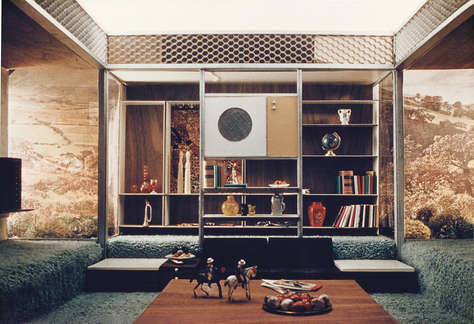Enjoy browsing, but unless otherwise noted, these houses are private property and closed to the public.
So don't go tromping around uninvited! CTRL-F to search within the page.

GEORGE HAROLD NELSON, FAIA (1908-1986)
Nelson was born in Hartford CT, graduating from Hartford HS in 1924, in Architecture from Yale in 1928, and again from Yale with a Fine Arts degree in 1931. Nelson got early recognition while still an undergraduate when he was published in Pencil Points and Architecture magazines. During his final year at Yale, he was hired by Adams and Prentice, with which he maintained an affiliation for quite some time. He won the Rome Prize in 1932 to study architecture in Rome for two years. While travelling, he met a number of Modernist pioneers whom he interviewed for articles for Pencil Points magazine. In 1935, Nelson joined Architectural Forum, where he was associate editor (1935–1943), and later consulting editor (1944–1949). He married Frances Hollister in 1934 and worked with William Hamby starting around 1936.
George Nelson spent a great deal of time interviewing and exchanging ideas with the other founders of the Modernist architecture movement of the 1940s, including Eliot Noyes, Charles Eames, and Walter B. Ford, all of whom he would later collaborate with. By 1940, Nelson had become known for several innovative concepts including the "family room", and the "storage wall". In 1947 Nelson opened his own design studio in New York City and in 1955 he incorporated it as George Nelson Associates, Inc.
After reading Nelson's book Tomorrow's House, D.J. Depree, the Chairman of Herman Miller, selected Nelson to be the company's Director of Design in 1947, despite Nelson having no experience designing furniture. Nelson was offered a contract that allowed him the freedom to work outside of Herman Miller and use designs from other architects that Nelson had worked with. The first Herman Miller catalog produced by Nelson was released in 1945. Over the following years it would include some of the most iconic home furnishings of the 20th century. Ray and Charles Eames, Harry Bertoia, Richard Schultz, Donald Knorr, and Isamu Noguchi all worked for Herman Miller, under Nelson's supervision.
In 1959, he married Jacqueline Griffiths and served as the lead designer for the 1959 American National Exhibition in Moscow. In 1960 Herman Miller created the Herman Miller Research Corporation under the direction of Robert Propst, under the supervision of Nelson. Propst created the Action Office I line, which was executed by Nelson's studio, and first appeared in Herman Miller's 1964 catalog. The Action Office I line was not a financial success, however, and Nelson was removed from the project. Propst then created Action Office II, better known today as the office cubicle. Despite Action Office II becoming Herman Miller's most successful project to date ever, George Nelson was not a fan. In 1970 Nelson sent a letter to Robert Blaich, who had become Herman Miller's Vice-President for Corporate Design and Communication, in which he described the system's "dehumanizing effect as a working environment." He said: "One does not have to be an especially perceptive critic to realize that AO II is definitely not a system which produces an environment gratifying for people in general. But it is admirable for planners looking for ways of cramming in a maximum number of bodies...". By 2005 total sales had reached $5 billion.
Nelson became world-famous for his Ball Clocks and Bubble Lamps which became icons of Modernism. Nelson retired with the closing of his studio in the mid-1980s. In 1984, he became a scholar in residence at the Cooper-Hewitt Museum. Bio adapted from Wikipedia. His archives are at Syracuse University and the Vitra Design Museum in Germany. There is a foundation website, not updated since 2012.

1933 - The A. S. Dwight House, status unknown.
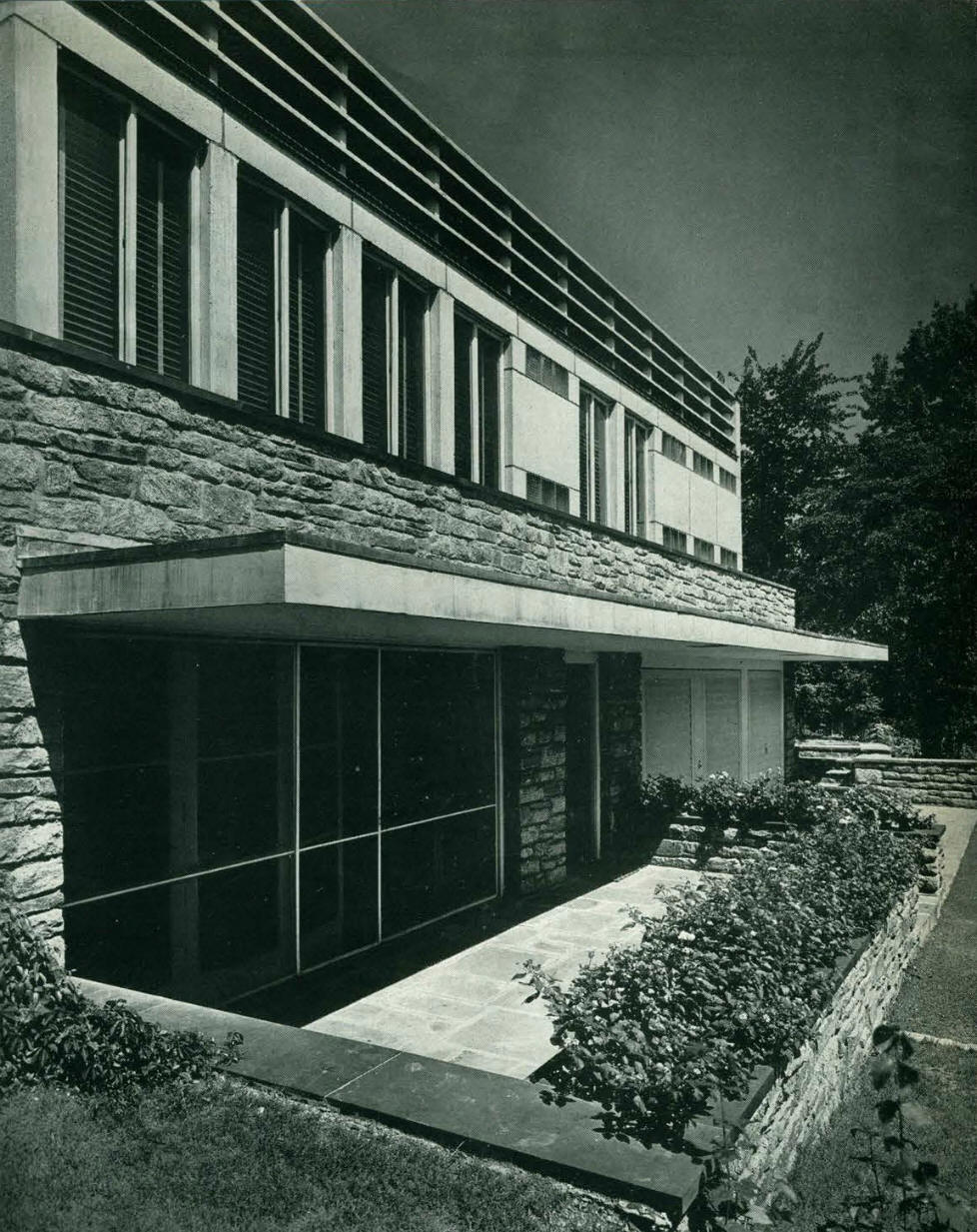
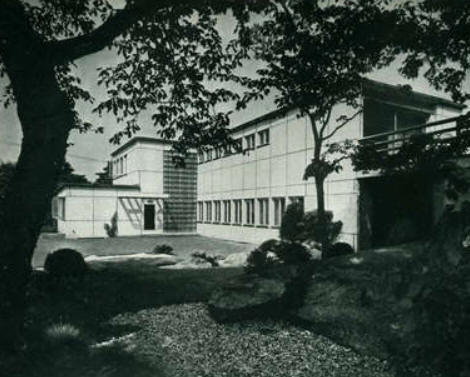
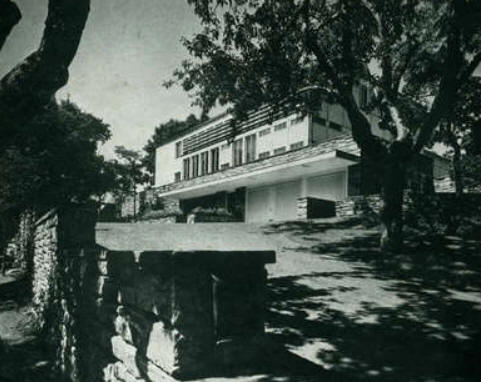
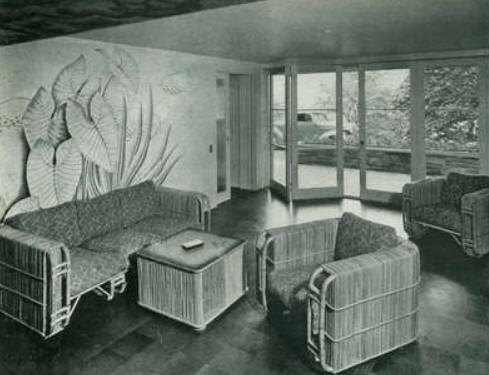
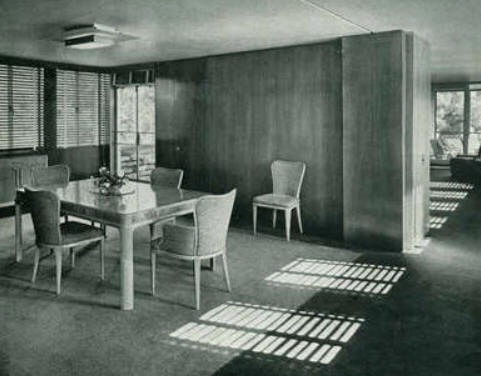
Year unknown - aka House in Scarsdale, Scarsdale NY. Designed with Fordyce and Hamby. Status unknown.

1936 - The John Hamilton House, Greenwich CT. Likely designed with William Hamby. Status unknown.

1936 - The R. Girdler House, Greenwich CT. Likely designed with William Hamby. Status unknown.

1936 - The Jules Singer House, Long Island NY. Likely designed with William Hamby. Status unknown.

1937 - The M. Bourjaile Apartment, New York NY. Likely designed with William Hamby. Status unknown.

1937 - The William Harris House, Greenwich CT. Likely designed with William Hamby. Status unknown.

1938 - The D. McKeon Remodel, Ridgebury CT. Likely designed with William Hamby. Status unknown.
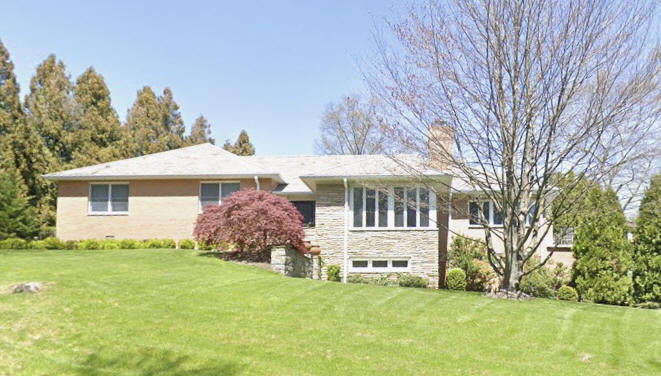
1937 - The M. F. Griffin House, 1
Sulgrave Road, Scarsdale NY. Designed with William Hamby and Allmon Fordyce. Status unknown.

1938 - The R. Douglas Remodel, Long Island NY. Likely designed with William Hamby. Status unknown.

1938 - The M. Lauria Remodel, Central Valley NY. Likely designed with William Hamby. Status unknown.

1938 - The J. Kaufmann House, New Brunswick NJ. Likely designed with William Hamby. Status unknown.

1938 - The A. Woodard Houses, Clinton NJ. Likely designed with William Hamby. Status unknown.

1938 - The G. Meissner House, Long Island NY. Likely designed with William Hamby. Status unknown.

1938 - The P. Deisroth House, Suffern NY. Likely designed with William Hamby. Status unknown.

1938 - The S. Fairchild Remodel, Long Island NY. Likely designed with William Hamby. Status unknown.

1938 - The G. Borgerson House, Long Island NY. Likely designed with William Hamby. Status unknown.

1939 - The A. S. Dwight House II, somewhere in CT. Prefab. Likely designed with William Hamby. Status unknown.

1939 - The E. White House, Florida. Likely designed with William Hamby. Status unknown.
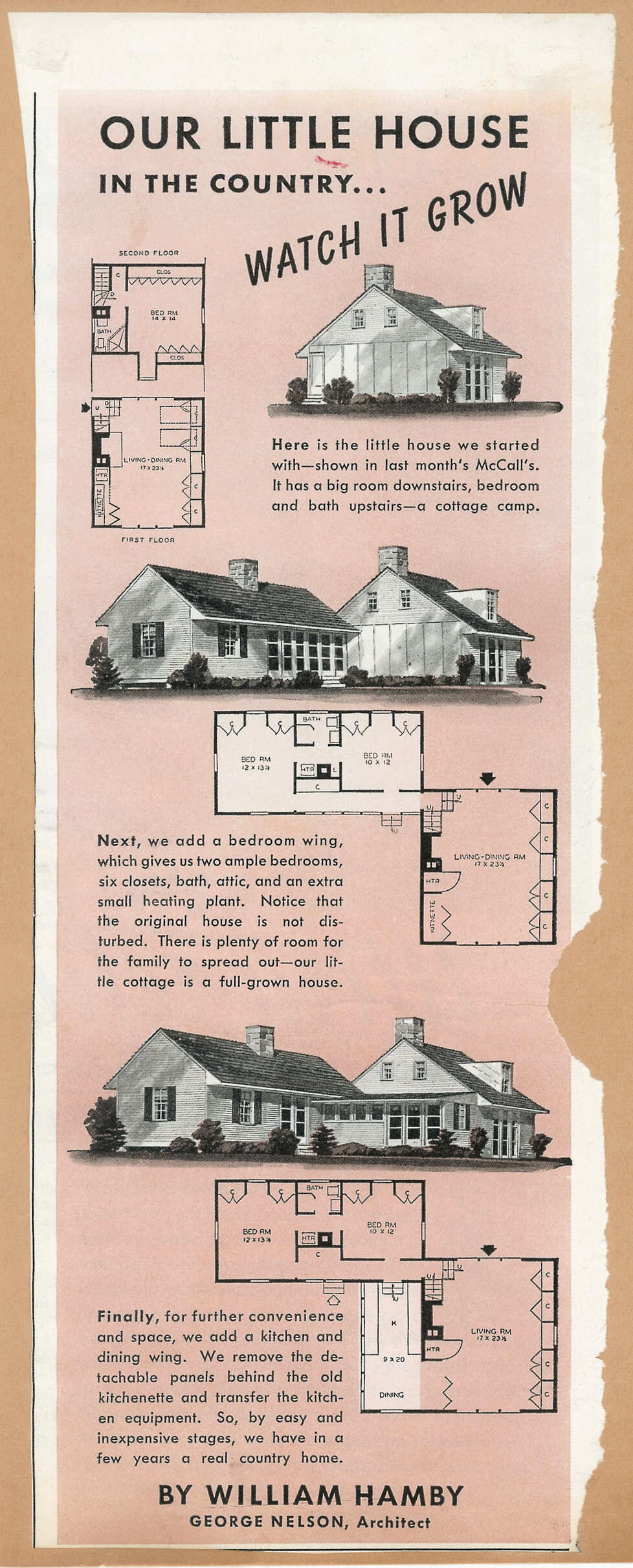
1940 - aka House for McCalls Magazine. Designed with William Hamby. Unbuilt.

1941 - aka Prefab House, Long Island NY. Status unknown.
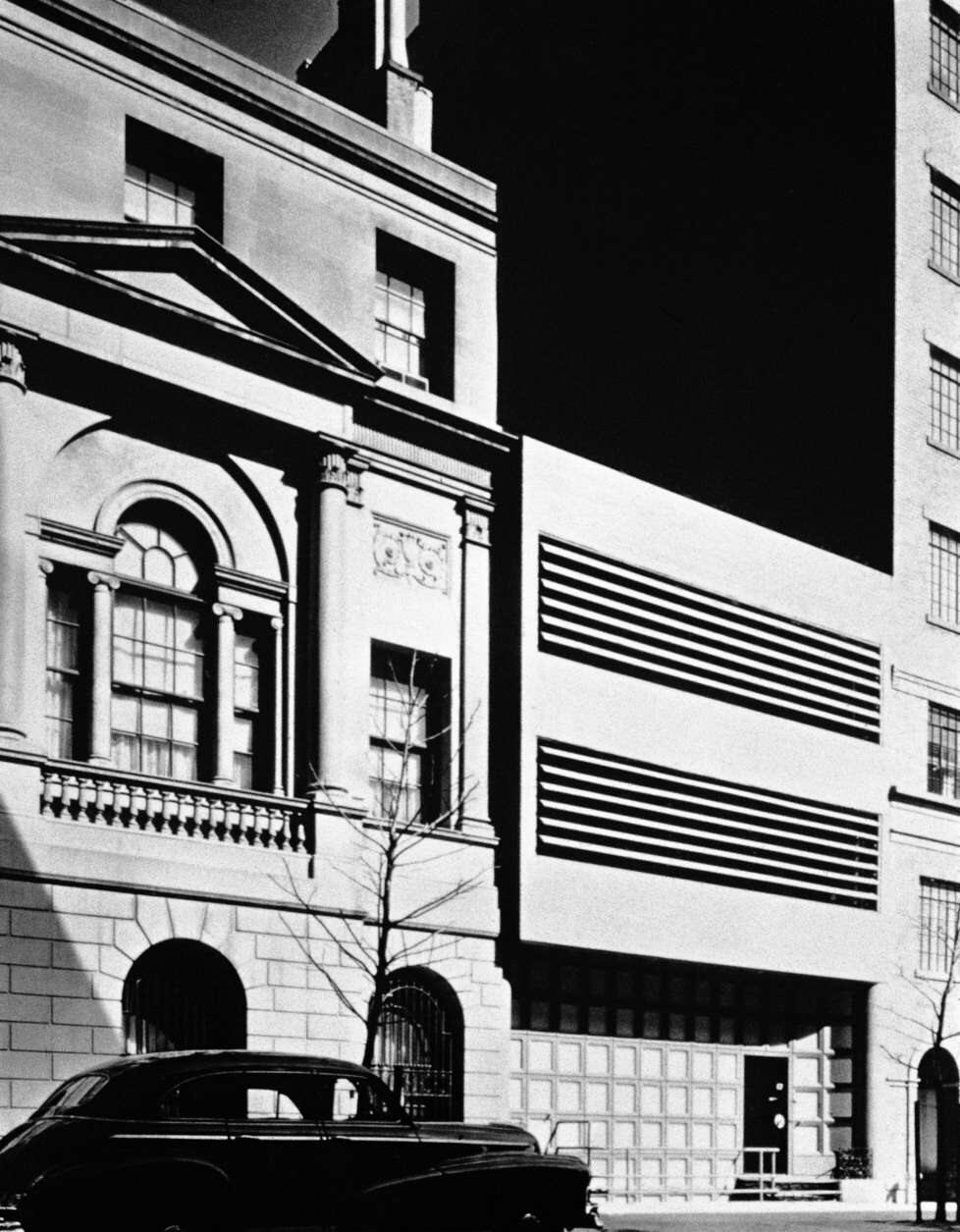
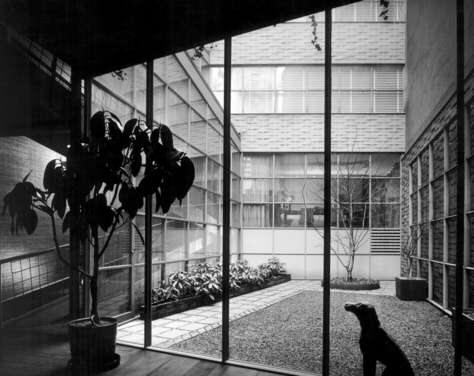
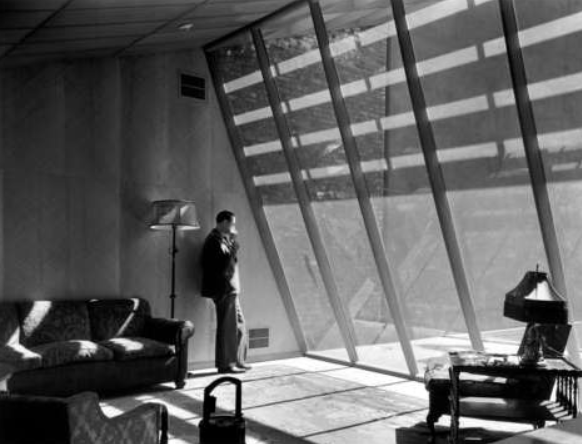
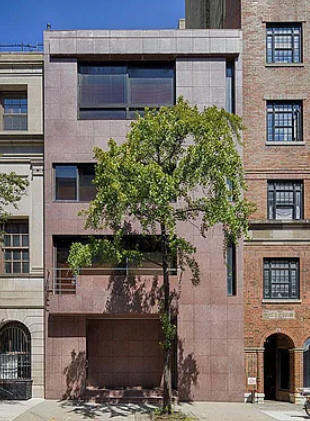
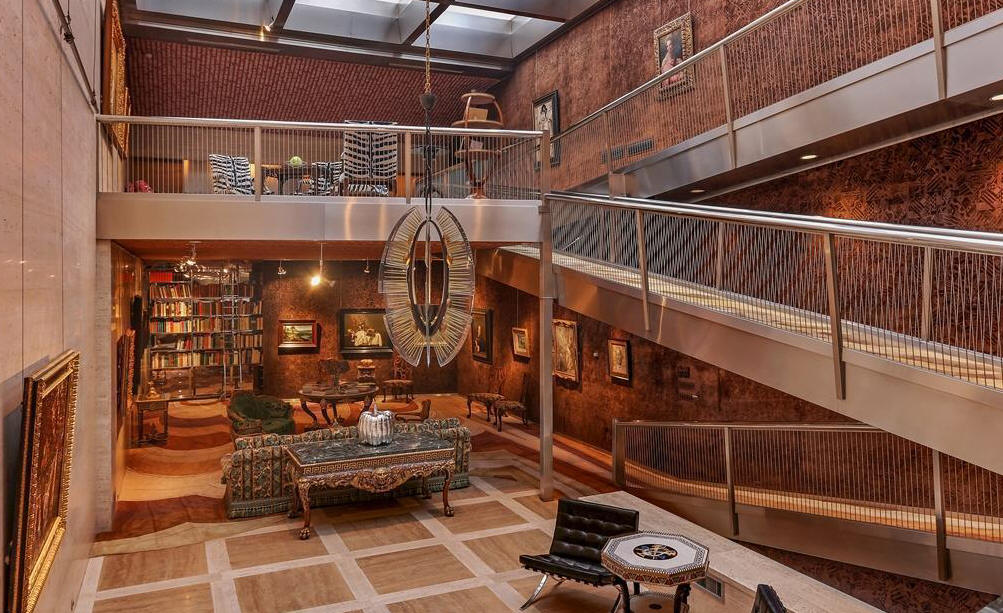
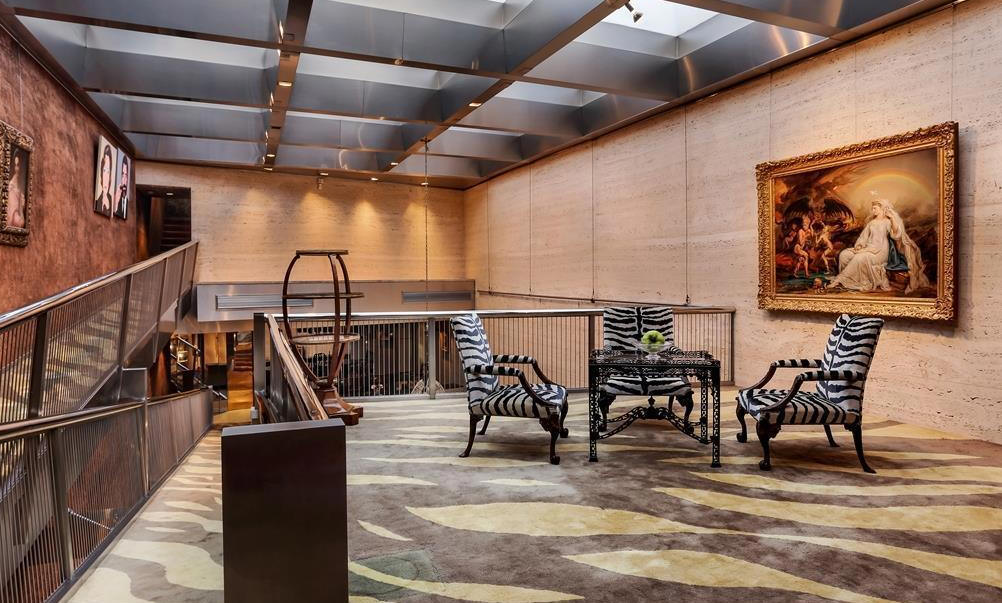
1941 - The Sherman Fairchild House, 17 East 65th Street, New York NY. Designed with William Hamby. 9440 sf. Sold in 1971 to Martin Zimet. A new exterior was designed by Michael Graves in 1979 was unbuilt. A new red granite exterior, 3rd photo, was completed in 1981, architect unknown. Despite being for sale for nearly ten years, still owned by Zimet as of 2022.
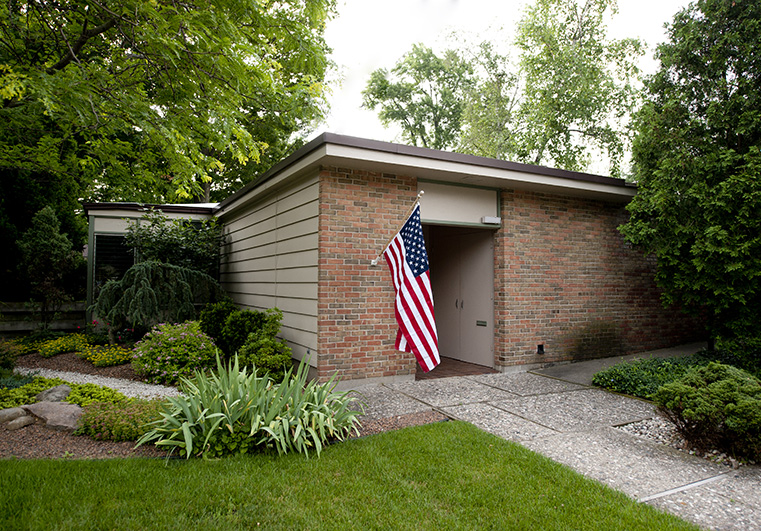
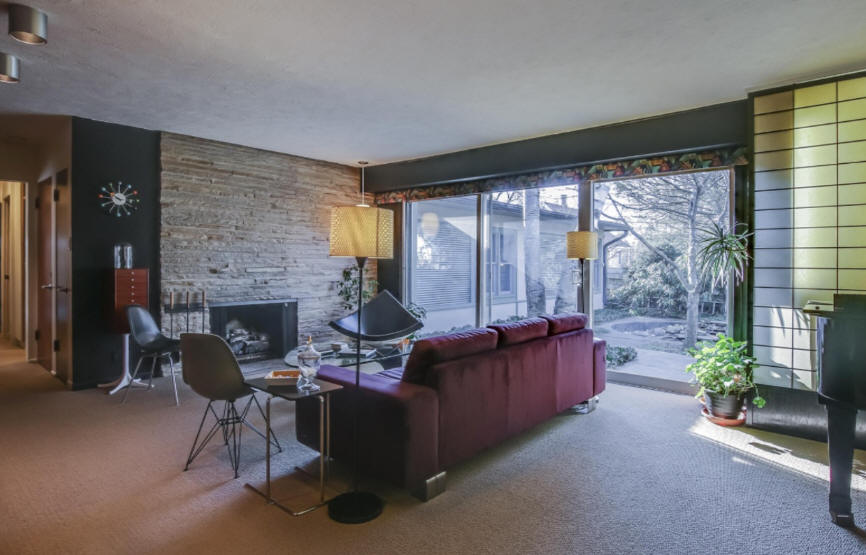
1946 - The Hugh and Ruth De Pree House, 155 South Centennial, Zeeland MI. He was VP at Herman Miller. 3000 sf. Featured the town's first residential swimming pool, built in 1952 in the front yard. Nelson did a kitchen remodel in 1962. In 1976 VanderMeulen Builders remodeled the master bath by adding a large dressing area and extensive closet space. The DePree’s donated it to Hope College when they moved to Florida. Hope promptly sold in 1981 to Kenneth Harper who added a roof over the interior courtyard in 1989, plus two sets of French doors in the reception room and eight feet of upper cabinets in the kitchen in 1992. Sold to the Timmers in 1995 who did extensive landscaping. Joel and Kristi Schipper then owned the house from 1999-2004. Sold in 2004 to Cheryl and Richard Van Oss who did a year-long renovation, adding new countertops, floor tile, and appliances in the kitchen, updating bathrooms, new carpet, adding doors to the carport, and furnished it with Nelson pieces. Sold in 2017.
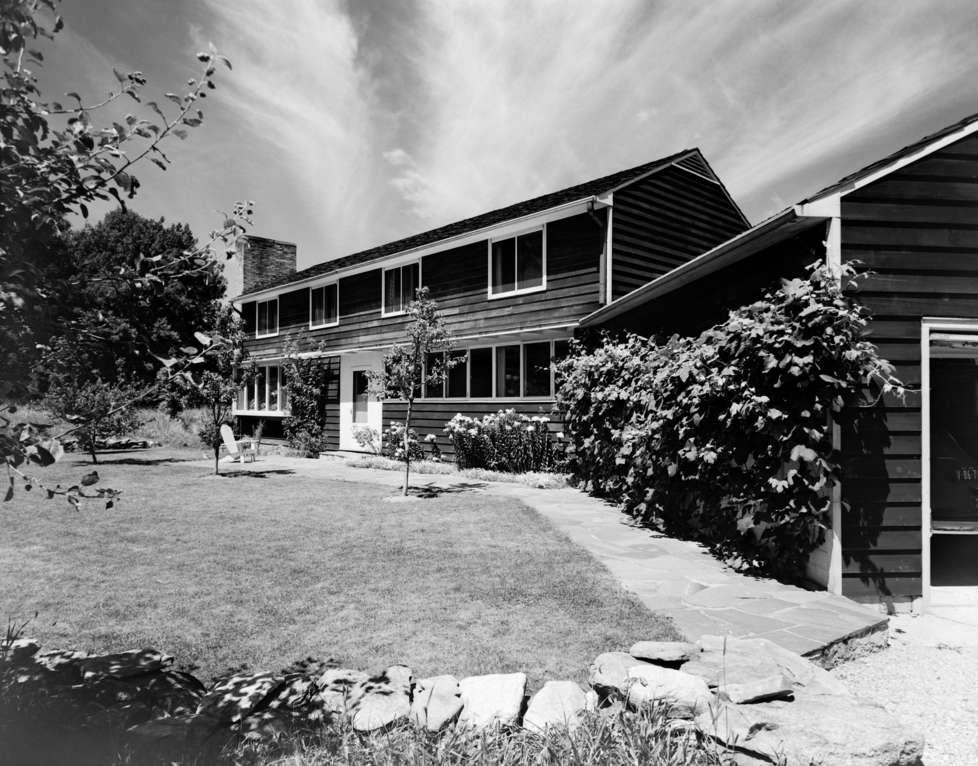
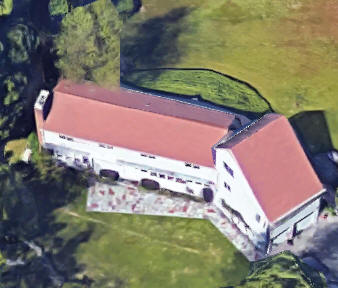
1947 - The Leonard (Leon) Svirsky House, 151 Pine Bridge Road, Ossining NY. Near Still Lake. Designed with William Hamby. Status unknown. Their children were Peter Svirsky and Marcia S. Dexter. Has been modified and added on. Sold to Benjamin Bryton. Sold in 1998 to Leland Bryton. Sold in 2004 to Anthony Rakis. Sold in 2008 to Anuradha and Sanjay Mitta.
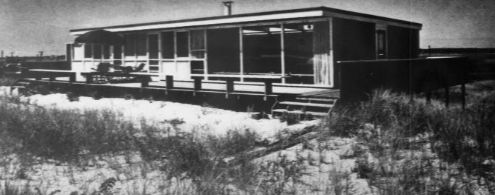
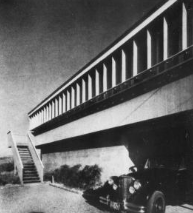
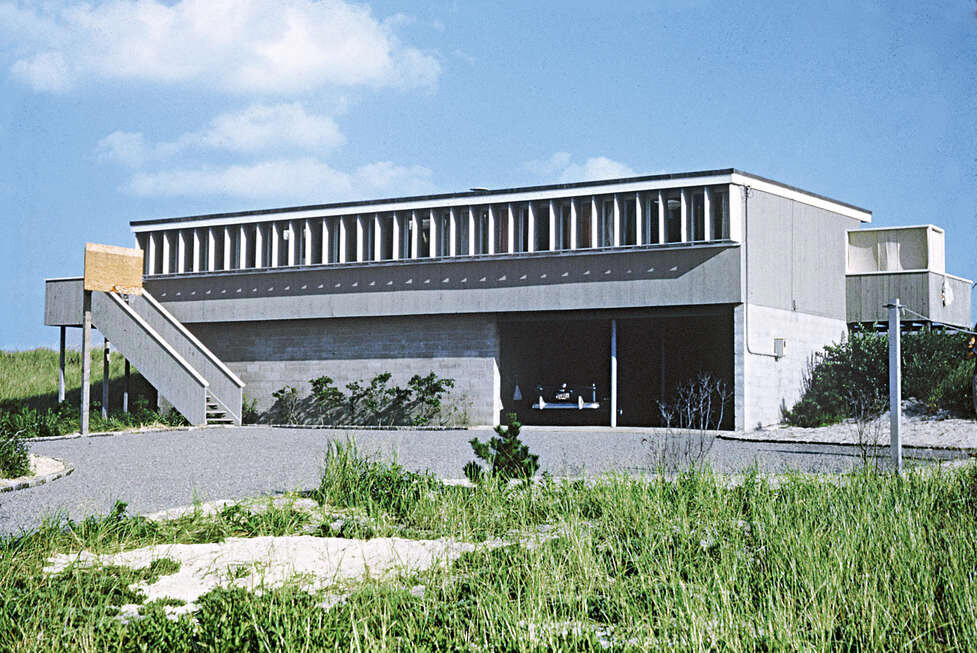
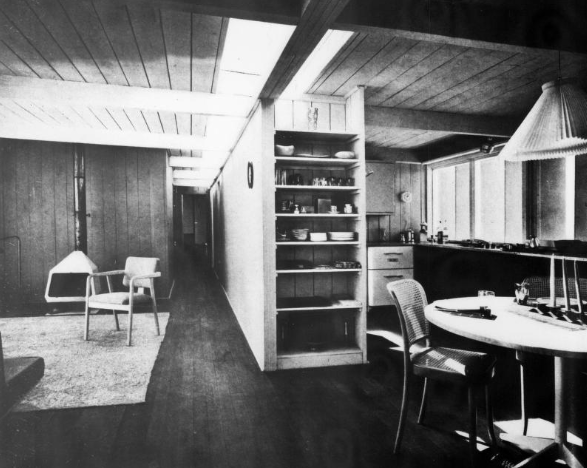
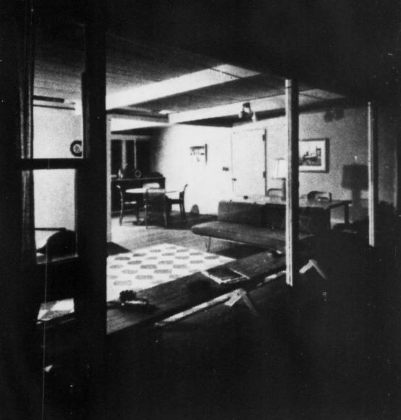
1950 - The Reverend Robert W. and Lindsay P. Woodroofe Jr. House, 20 Dune Road, Quogue NY. The Nelsons lived upstairs from the Woodroofe's in New York City, Built for an Episcopal Minister, his wife, and four children. Designed with Gordon Chadwick. Nelson designed the furniture. Featured in Interiors Magazine, November 1952. Renovated and expanded around 1975 by Chadwick. B/W photos by Alexandre Georges. Sold in 1985 to actress Susan Lucci, who destroyed it and built a new house in 1989.
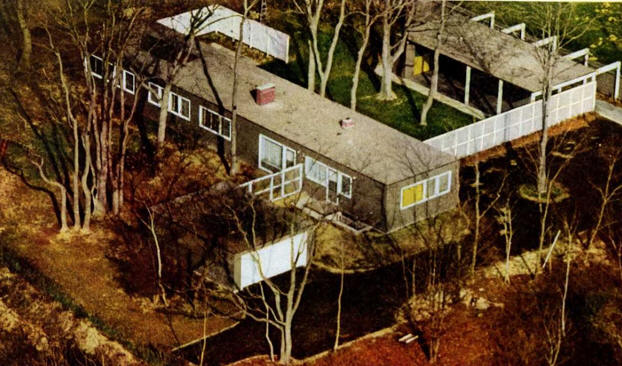

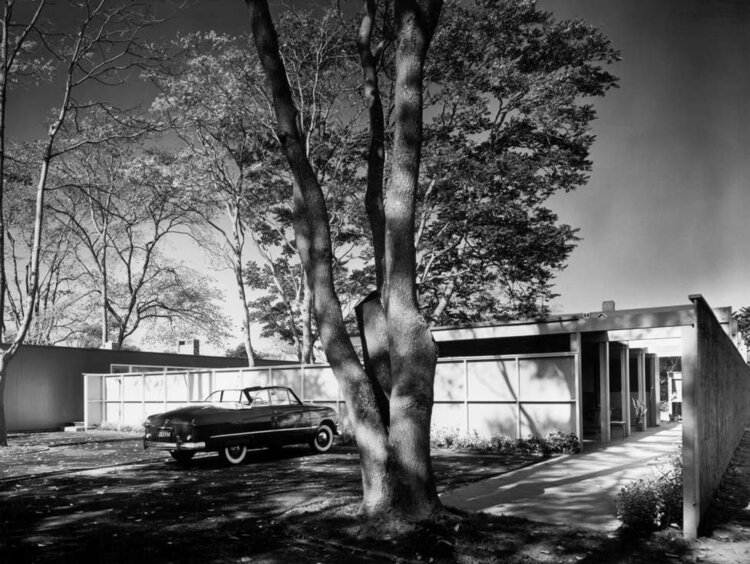
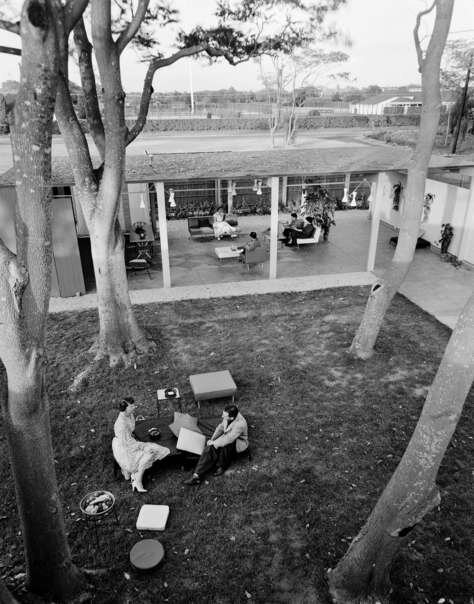
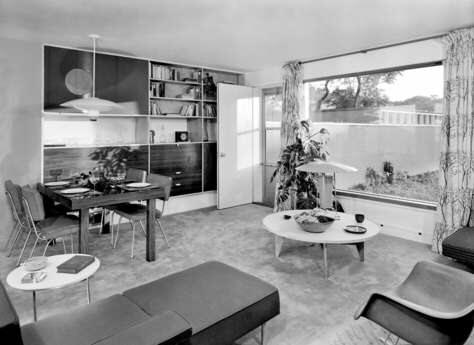
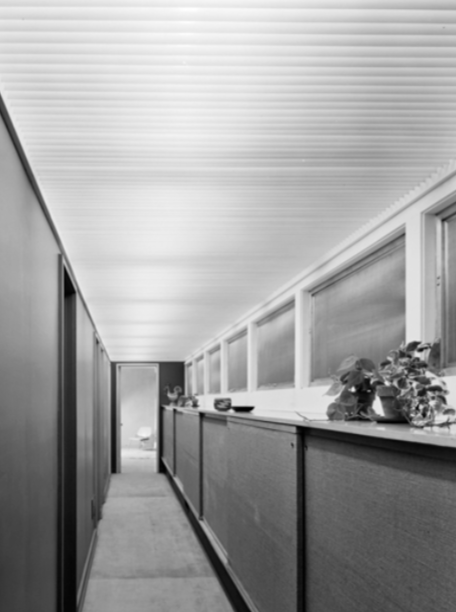
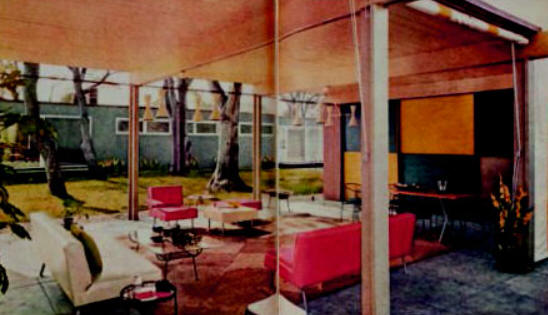
1950 - aka Holiday Magazine House, 3 Club Lane, Quogue NY. A demonstration vacation house designed with Gordon Chadwick. Built by Fred Perry and Arnold Burding. Furnished by Herman Miller / Henry Wesselman. B/W photos by ESTO. Featured in Holiday Magazine, May 1951. Nelson lived there for a while with first wife Frances. Renovated around 1991. Sold to Edcar Corporation / Edward S. Reid. Deeded in 2018 to 3 Club LLC / Reid Family.
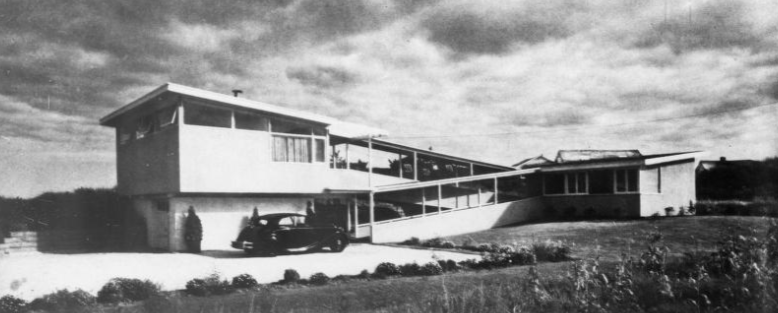
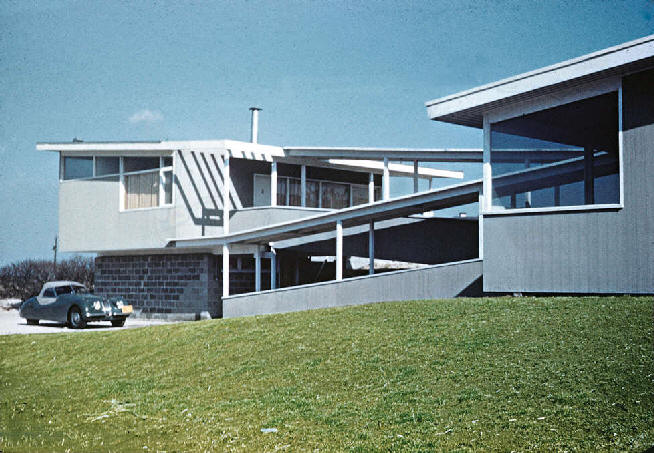
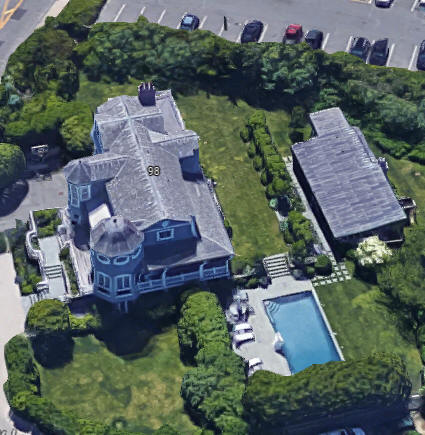
1950 - The John Sidney Johnson House, 98 Ocean Avenue, East Hampton NY. Commisioned around 1949. Featured in Interiors Magazine, November 1952. Sold to Kenneth and Jerilyn Kronen. They hired Roger Bartels to do a renovation. Sold in 2000 to Nancy Blakeman, who a huge new house to the property and basically destroyed most of the two-level house, making it a one-level shed roof structure as a guest house. Blakeman later married Paul McCartney; she is still owner as of 2022.
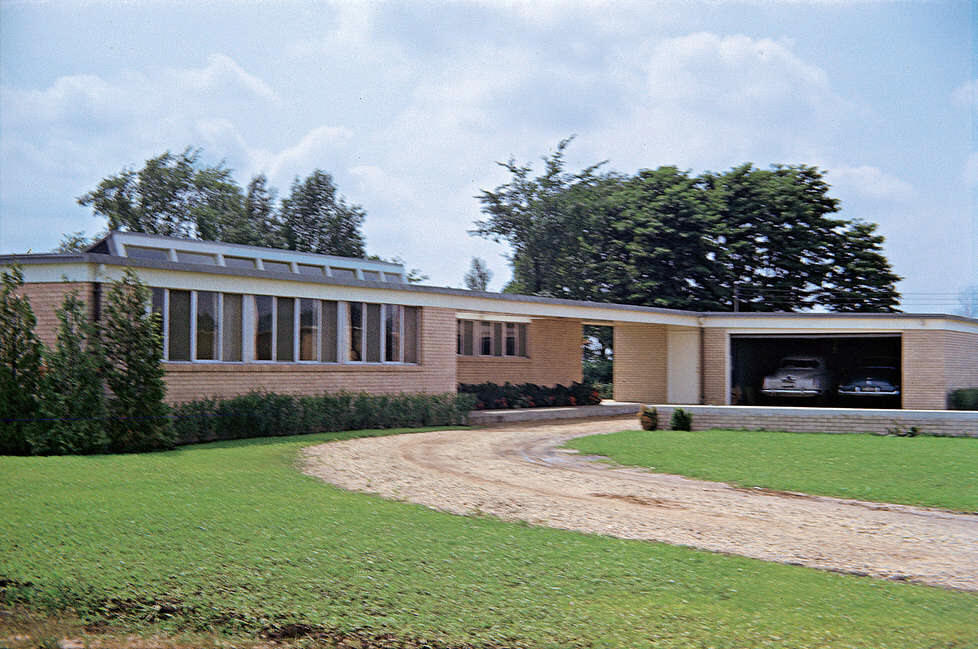

1950 - The Howard Miller House, 424 West Lawrence Avenue, Zeeland MI. This was furniture maker Herman Miller's brother who ran a clock company. Featured radiant floor heating. Sold in 1993 to the Walsh family, still owners as of 2022.
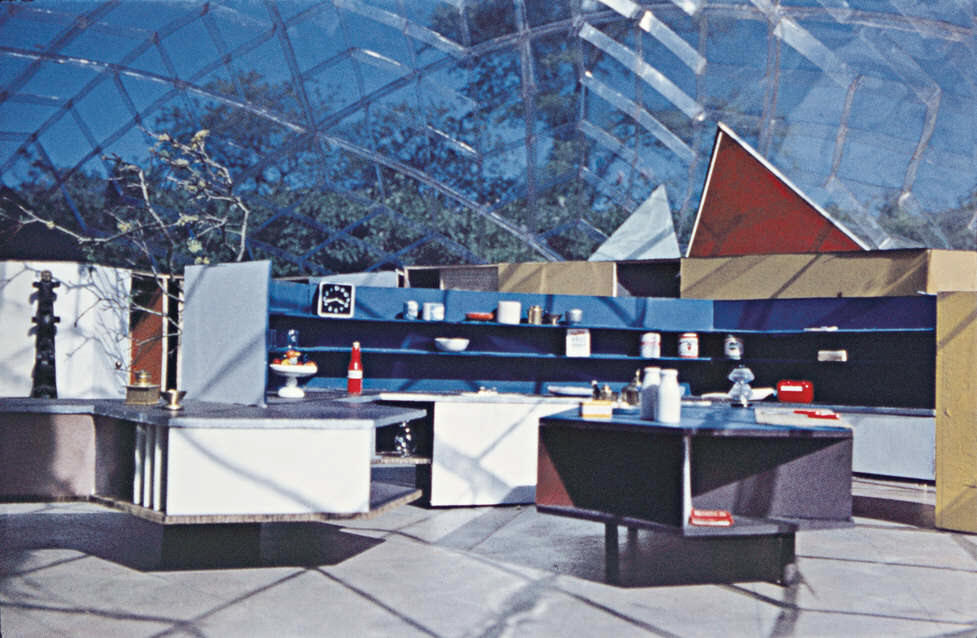
1952 - Transparent Dome Home, designed with Buckminster Fuller. This is a photo of the model. Unbuilt.
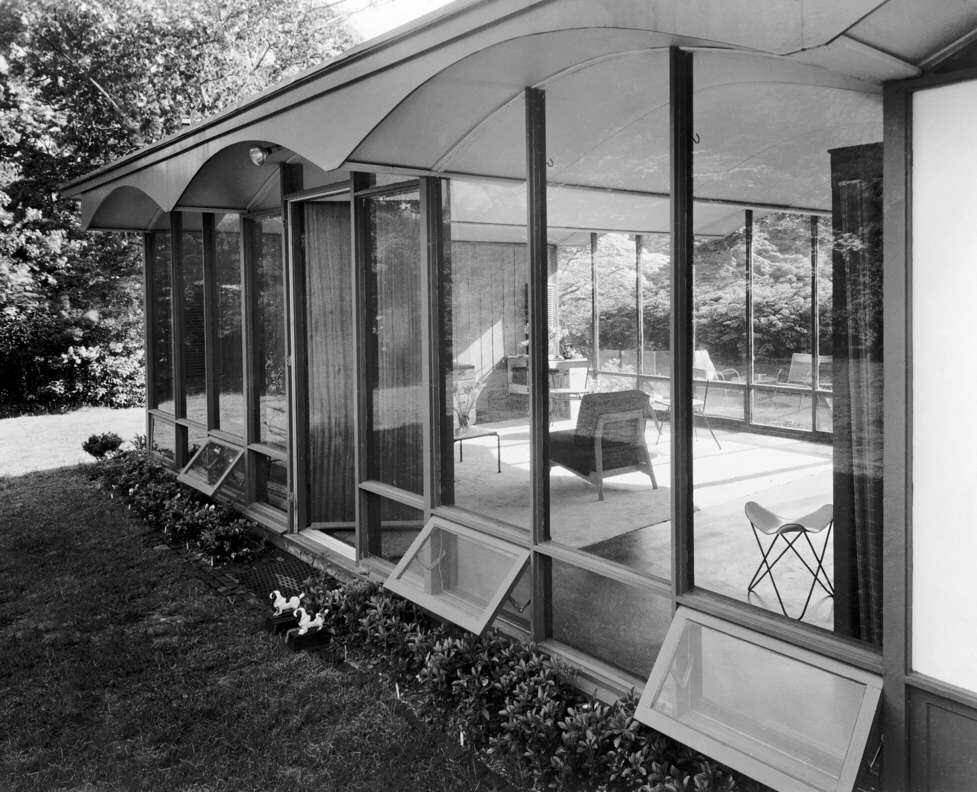
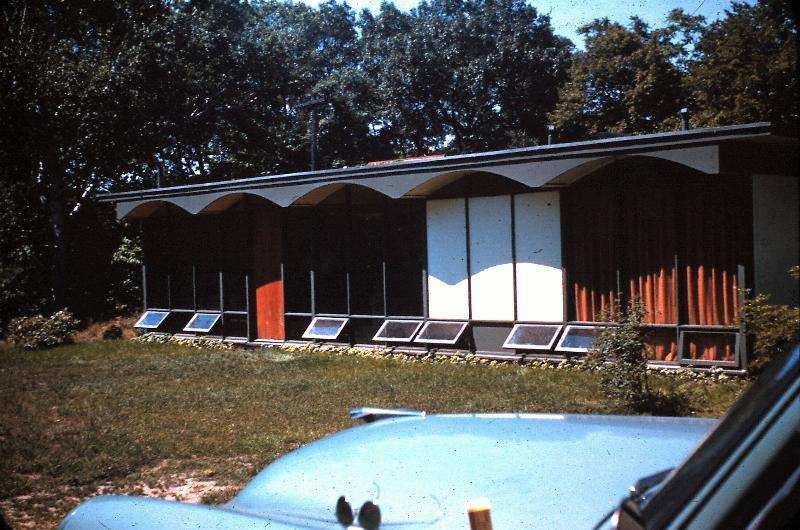
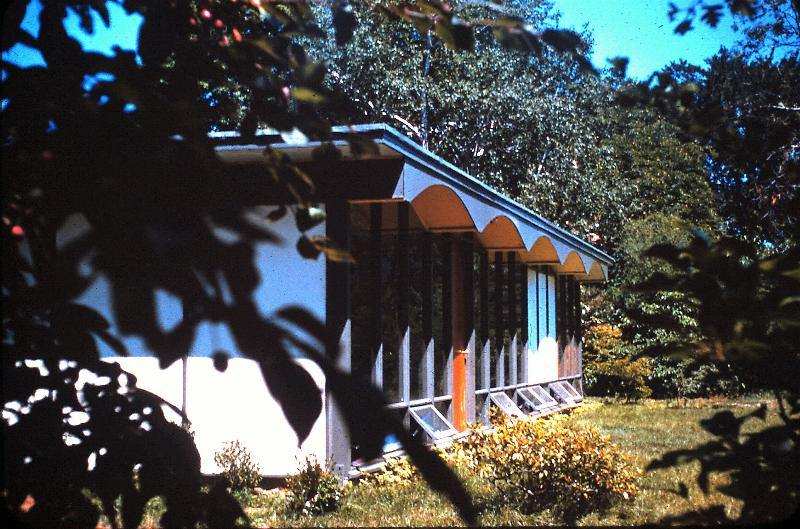
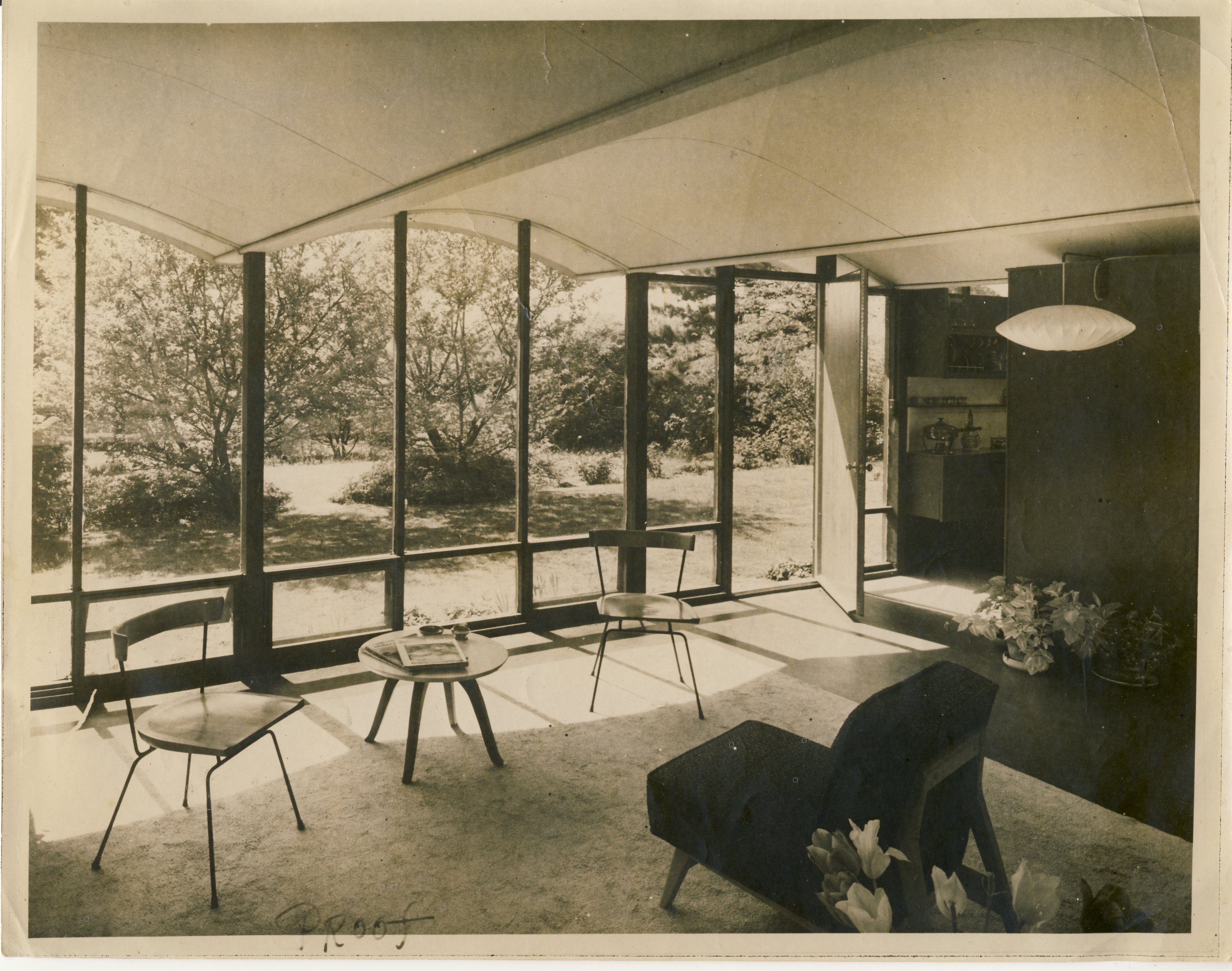
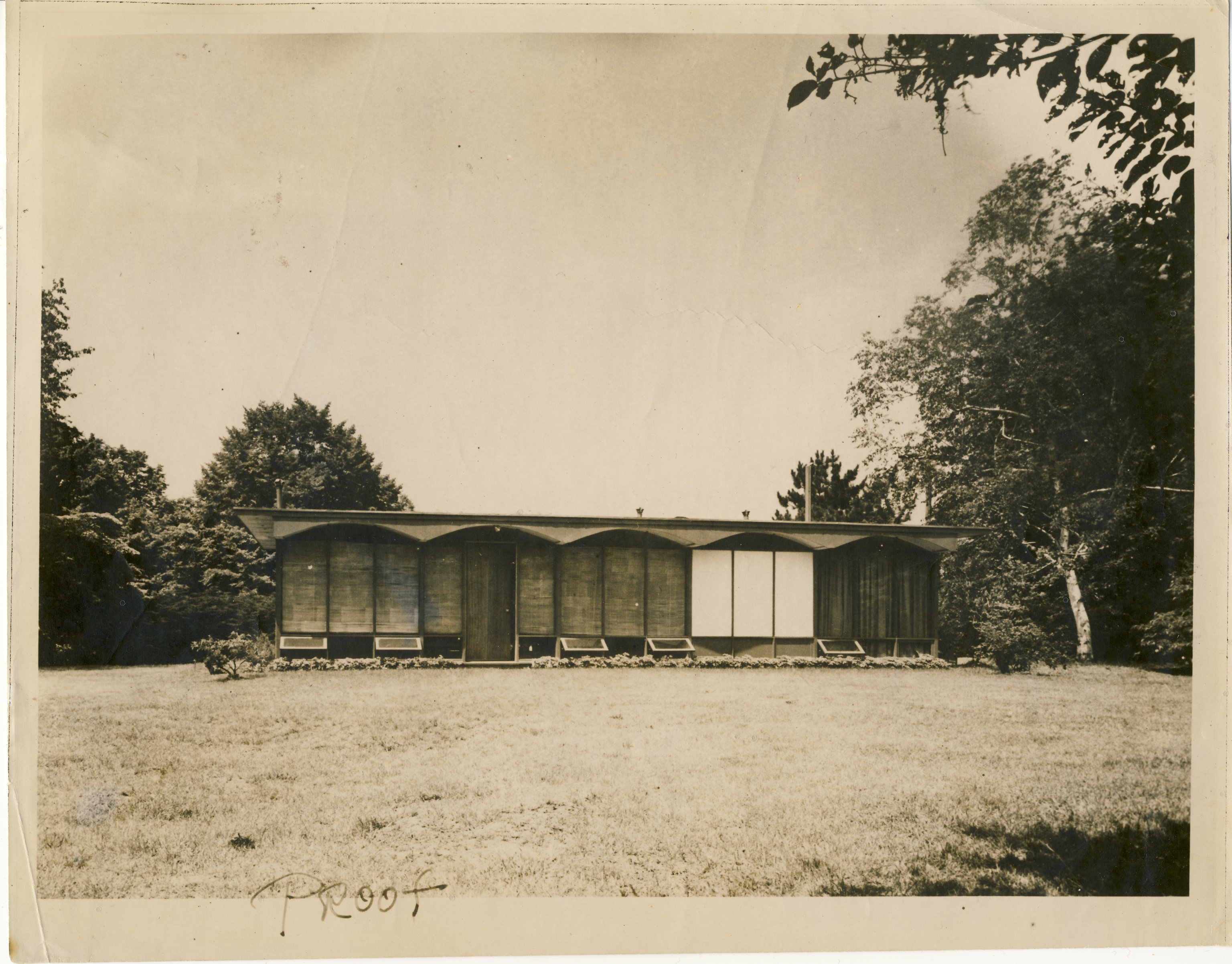
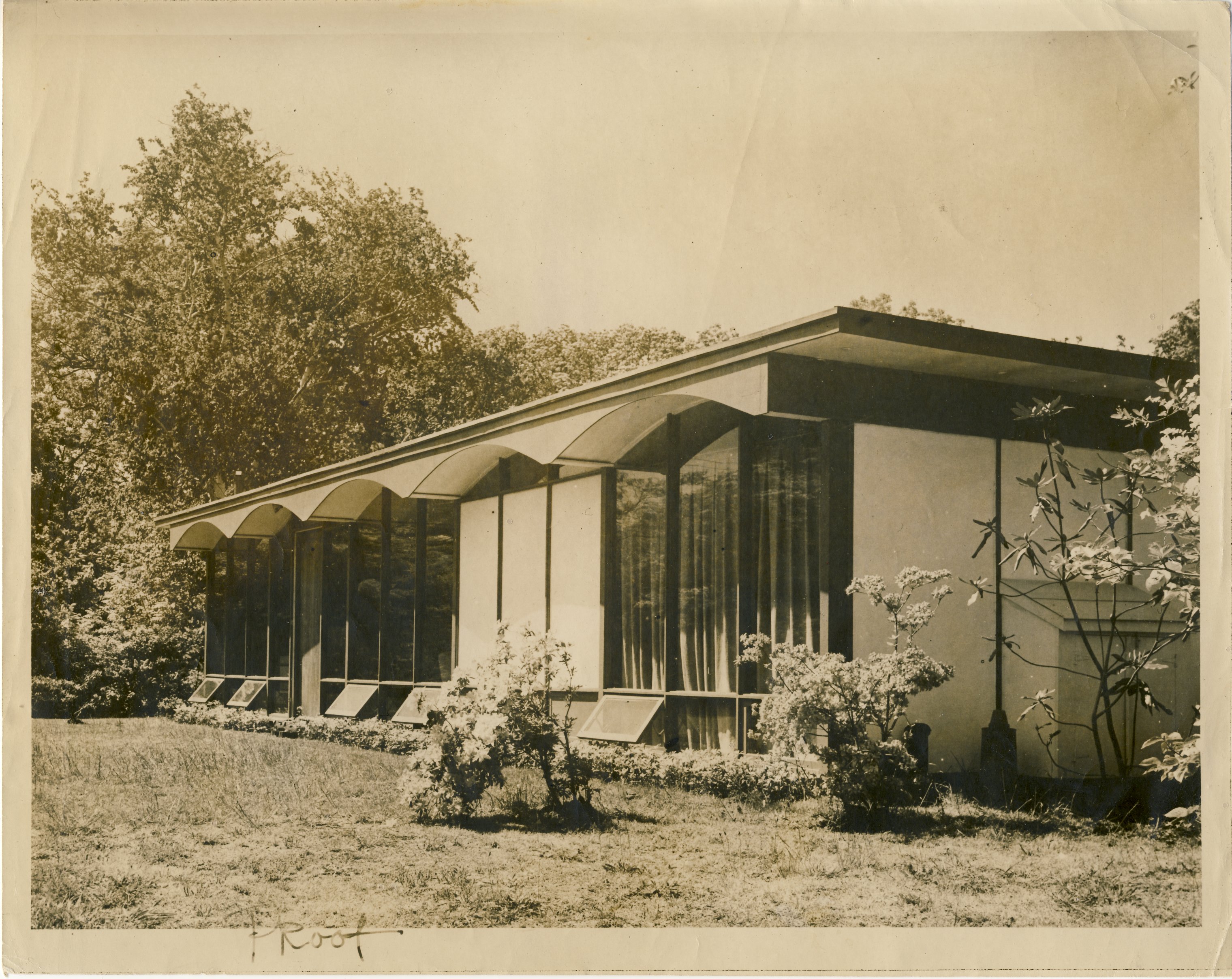
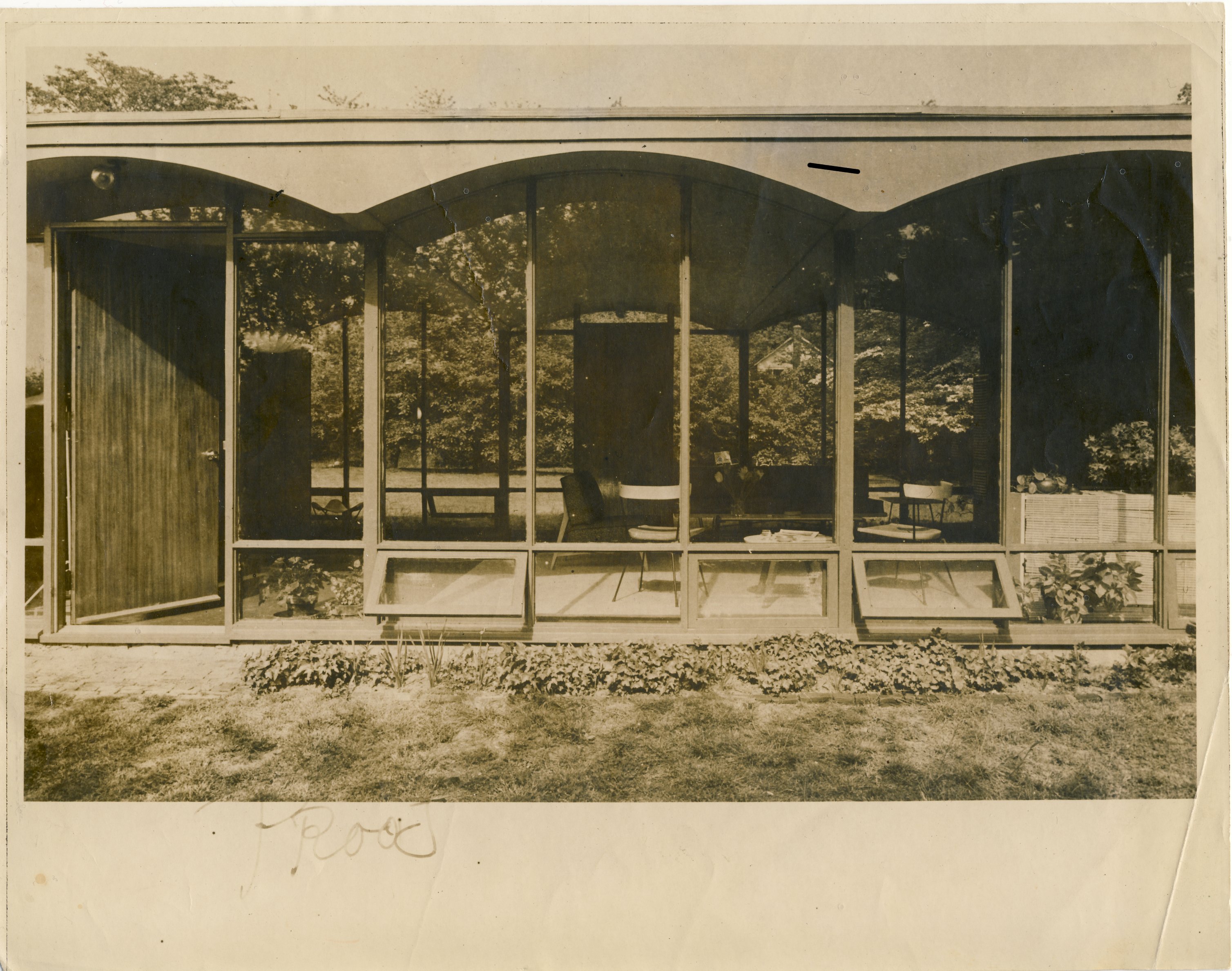
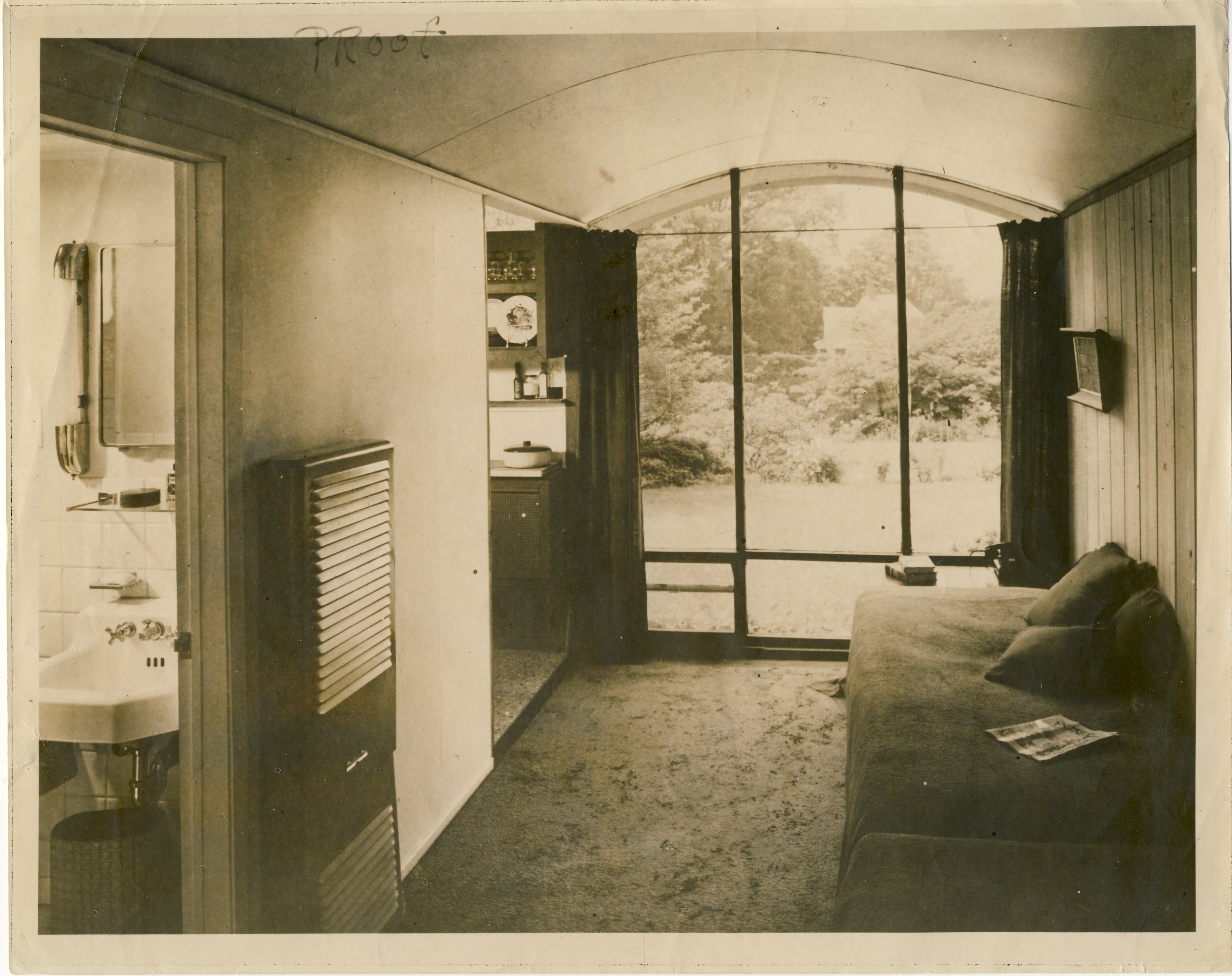
1953 - The Girard L. and Barbara Spencer, Jr. House, 154 Dayton Street, Sea Cliff NY. Later addition of concrete block. Sold in 1996, property subdivided, then the house was destroyed, replaced by three new ones. Photos provided by their son, Guy Spencer.
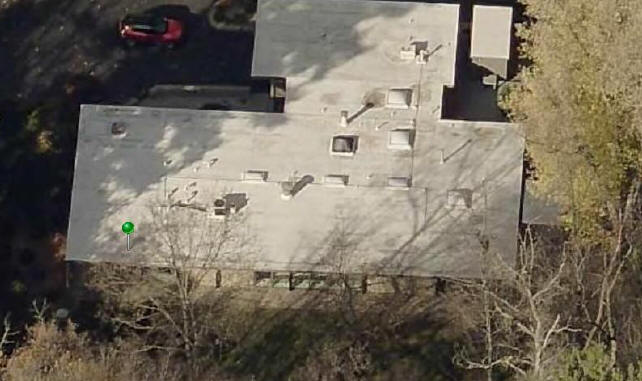
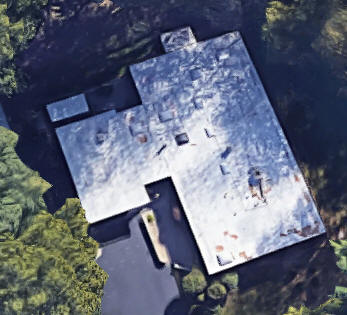
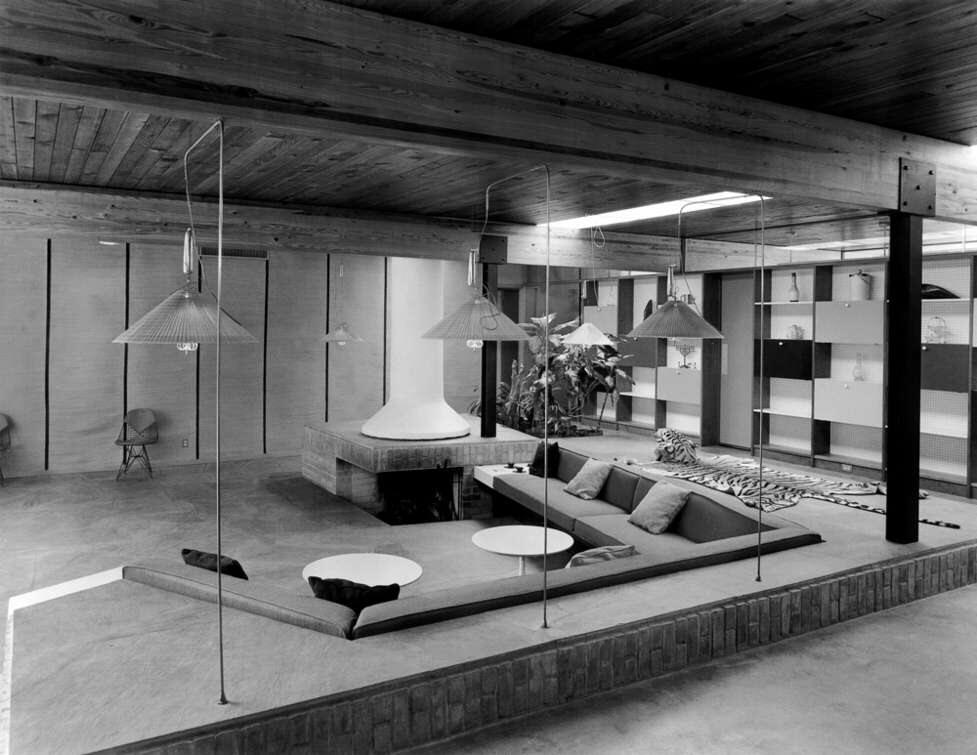
1953 - The Sidney M. and Anne Robbins House, 5124 Corey Road, Toledo OH. Designed with Maria Fenyo, Gordon Chadwick. Sold in 1959. Sold in 2007 to Billie Taylor, still owner as of 2022.
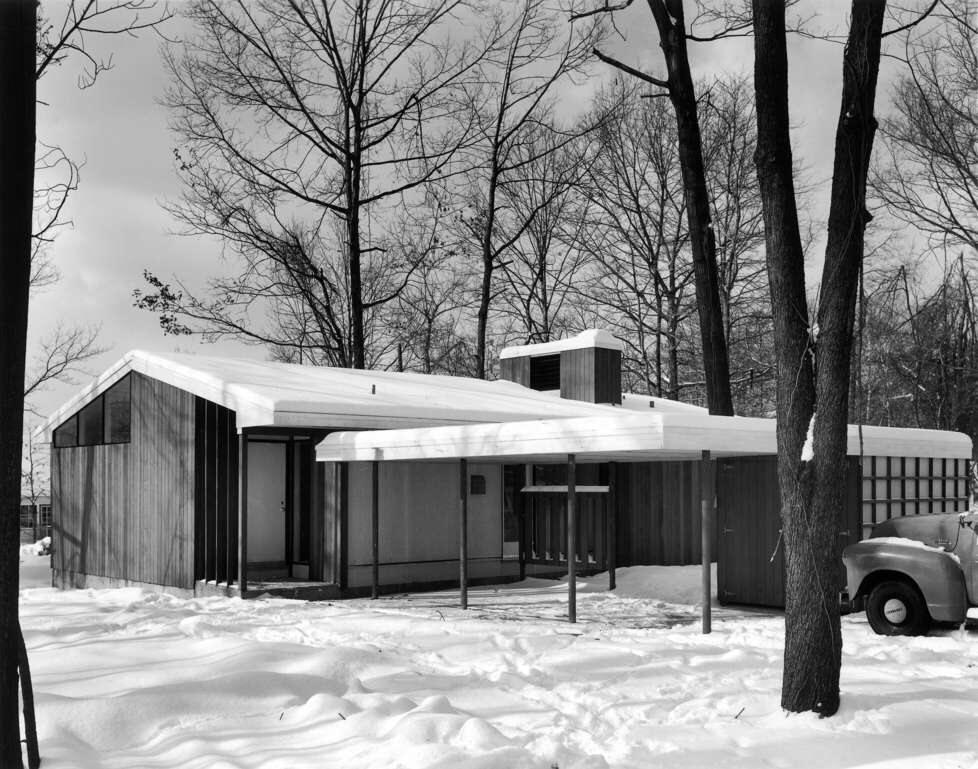
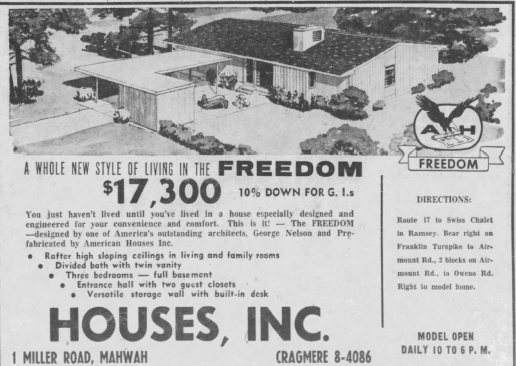
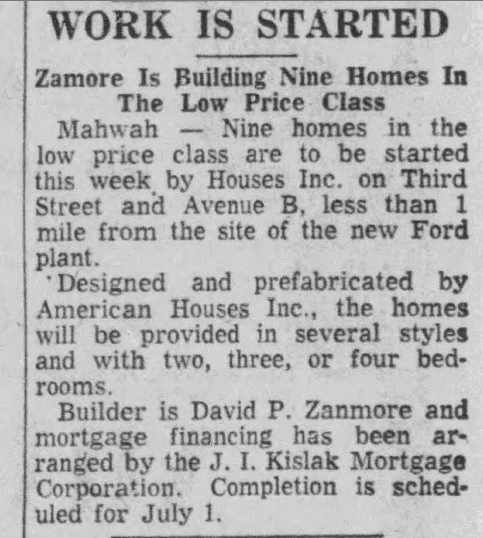
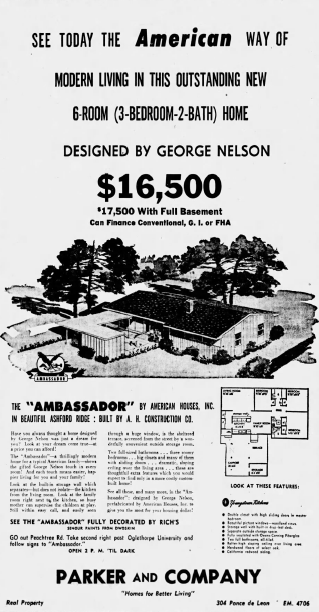
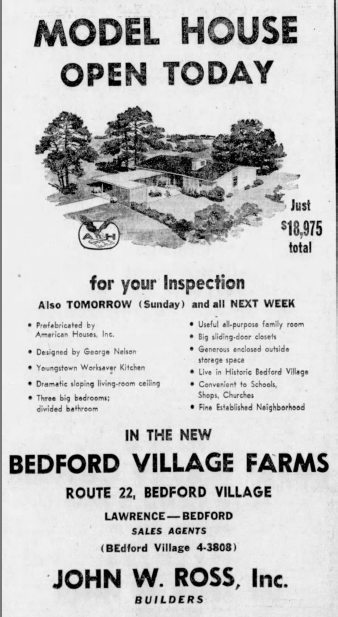
1954 - The American Houses Freedom House, Oweno Road, Mahwah NJ. Designed for American Houses with Gordon Chadwick. 1100sf. Featured in PF magazine, March 1954. Presumed destroyed, no sign of it in 2023 on Oweno Road. According to the ad above, there may be as many as eight more in that area. Status unknown.
1954 - At least one more was built in Atlanta GA, see ad above. Status unknown.
1954 - At least one more was built in Bedford NY, see ad above. Status unknown.
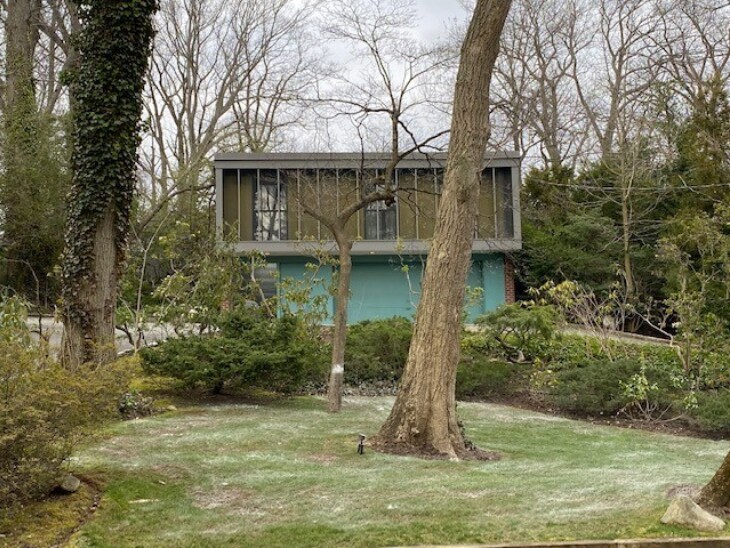
1954 - The Julius and Anne Abeles House, 40 The Intervale, Roslyn NY. 2831 sf. Designed with Gordon Chadwick. Status unknown.
1954 - The Leopold Residence Kitchen Addition. Status unknown.
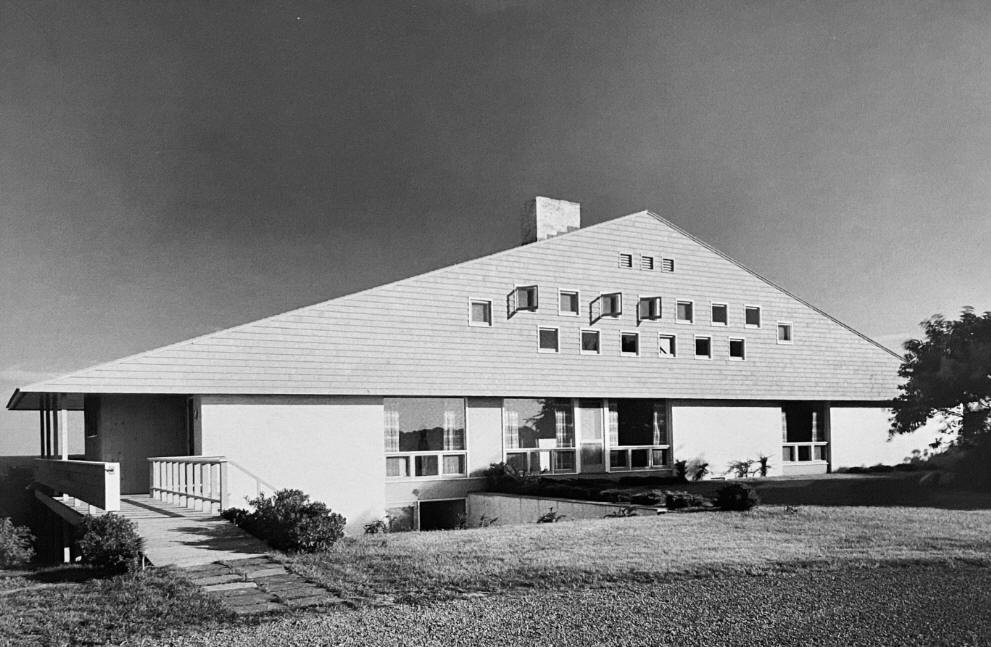
1956 - The Otto Spaeth House, 30 Spaeth Lane, East Hampton NY. Designed with Gordon Chadwick. Sold in 1966 to June Noble Smith Larkin Gibson. Her father Edward J. Noble founded both Life Savers and the ABC television network. Top photo by ESTO. Sold in 2021. Destroyed in 2023.
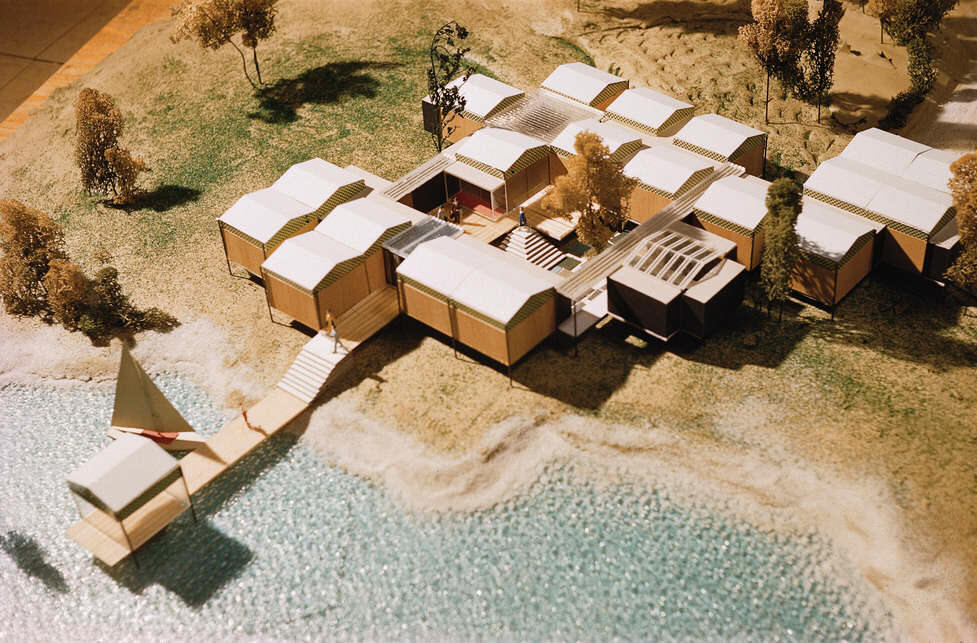
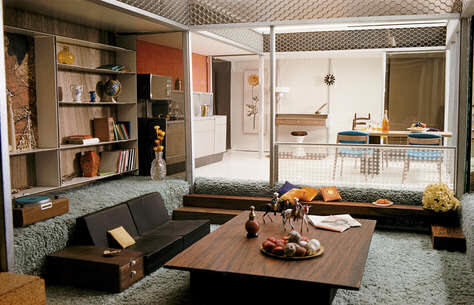
1957 - aka Experimental House. A series of pavilions that would later inspire many architects. Designed with Gordon Chadwick, Ronald Beckman, William Katavolos. A full scale mockup of the interior was built at Nelson's office, last two photos. Featured in Architectural Record, December 1957. Unbuilt.
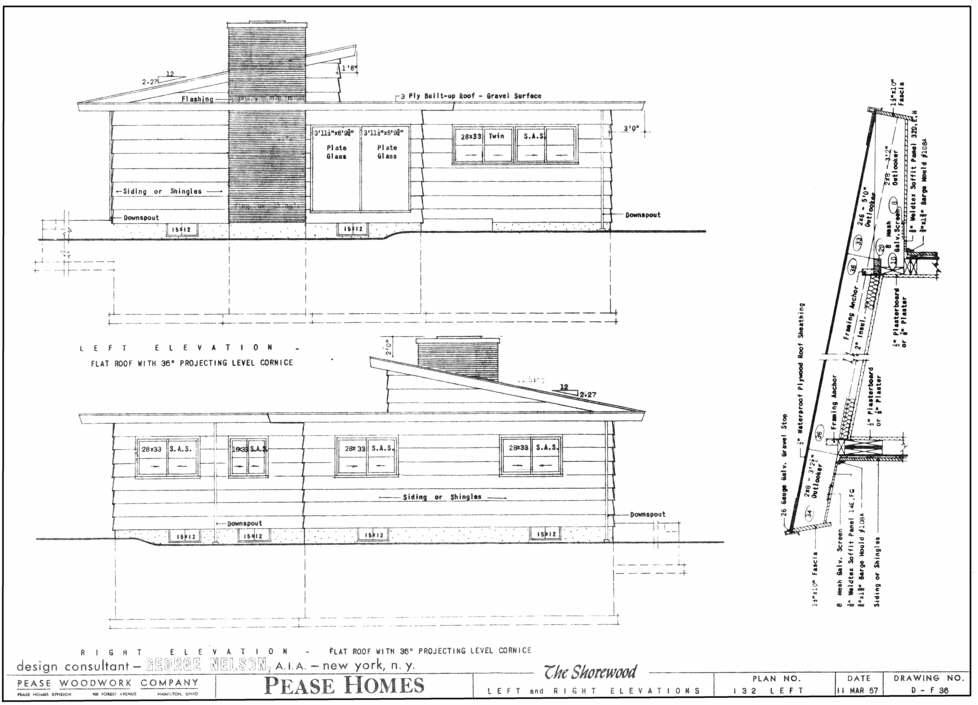
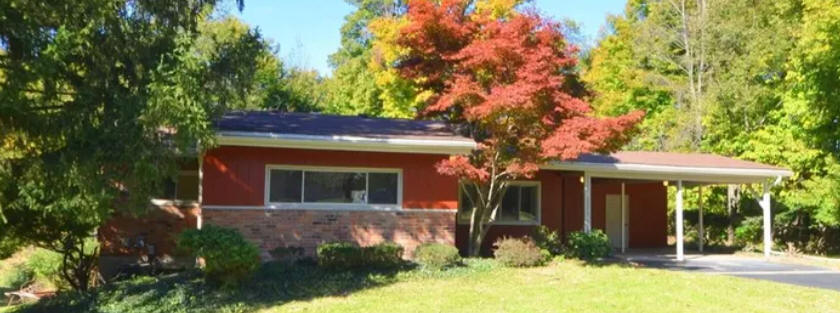
The 1956 Shorewood Model, 7677 View Place Drive, Finleytown OH.
1957- The Pease Woodwork Houses, Ohio and Kentucky. Designed with Gordon Chadwick. Nelson sold plans to builders. Several were built.
1957 - The William Dunlap Renovation, Charlotte MI. Interiors only. Dunlap was president of Aluminum Extrusions Inc. Status unknown.
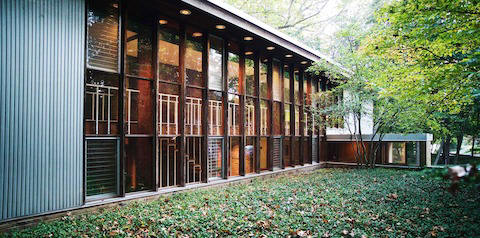
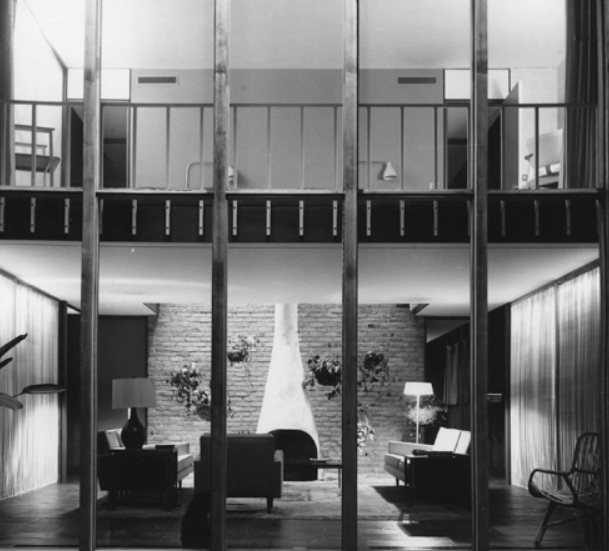
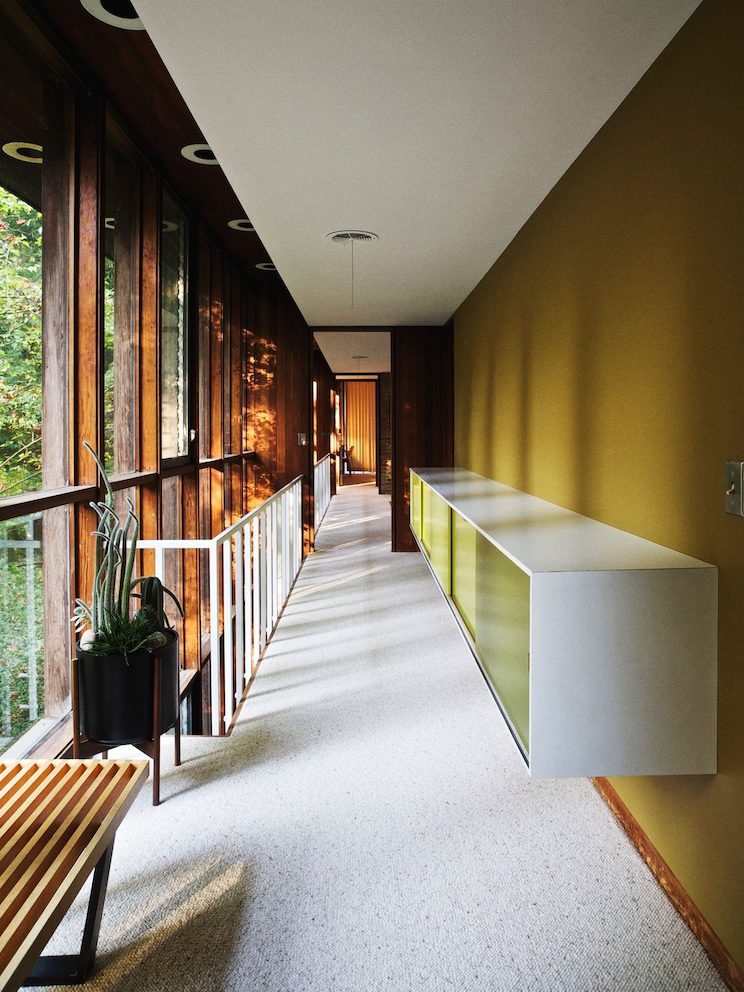
1958 - The James and Sarah (Sally) Kirkpatrick House, 2104 Sheffield Drive, Kalamazoo MI. Commissioned 1956. 3500sf. Designed with Gordon Chadwick, Lucia DeRespinis, Delores Engles, and Robert Rorich. The firm also did the interiors. Featured in McCalls Magazine, January 1959. Sold in 2016 to 2104 Sheffield Drive / David and Darci Corner.
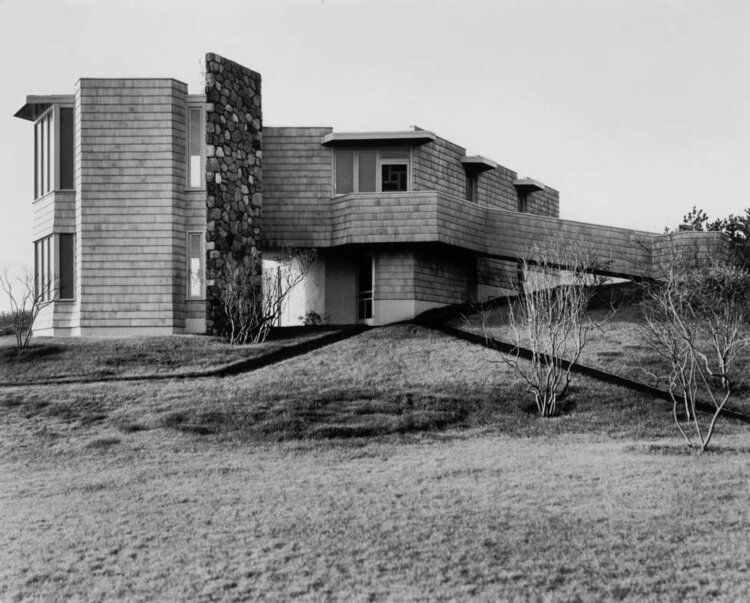
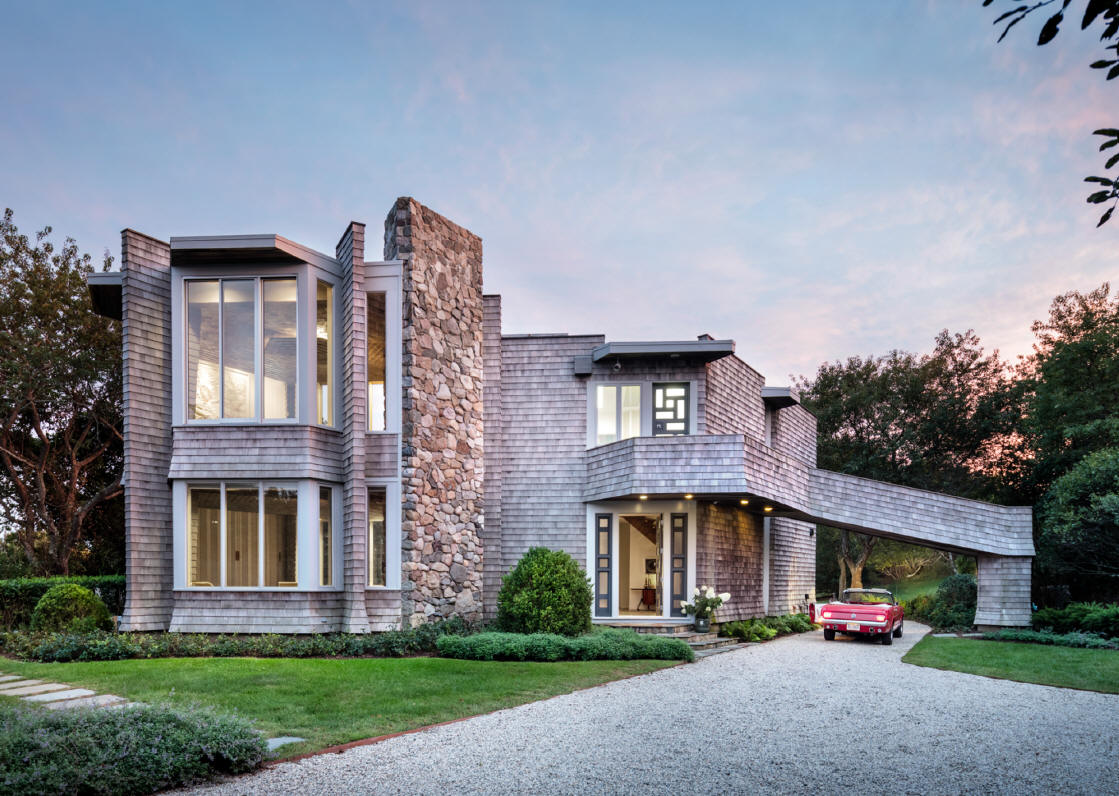
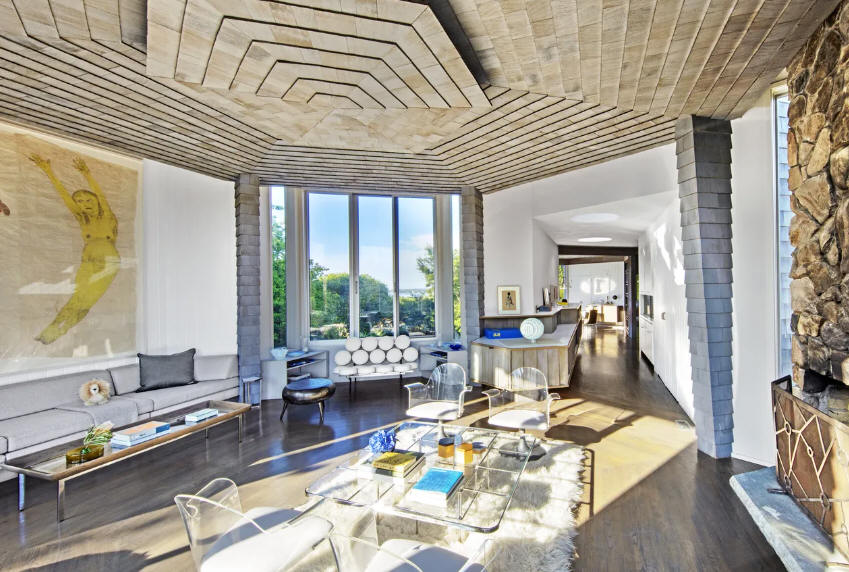
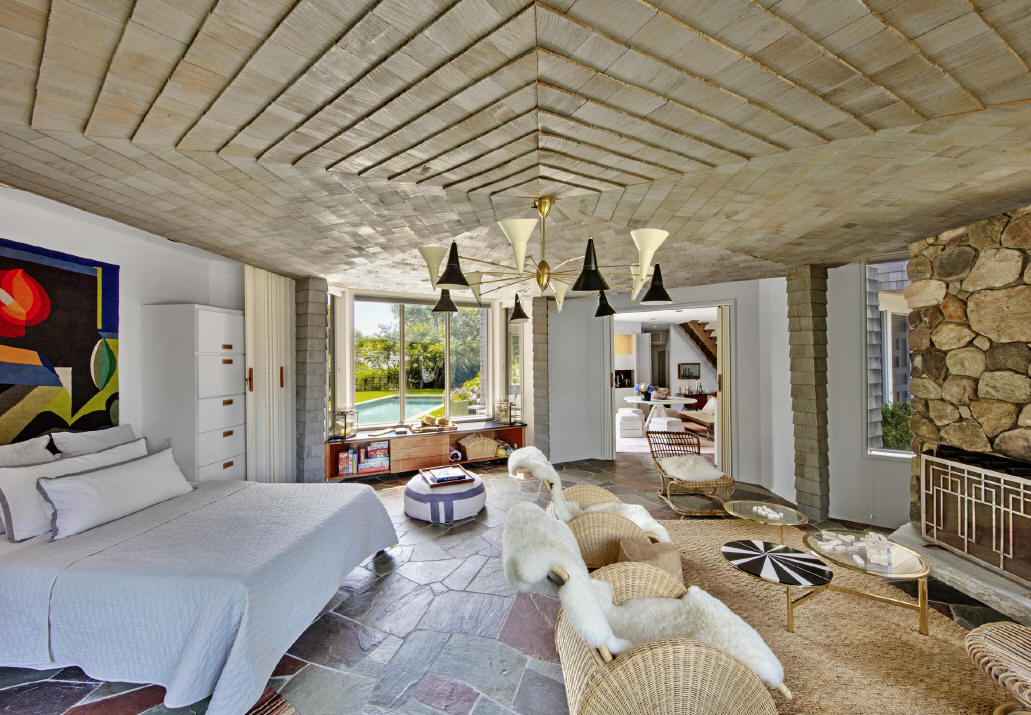
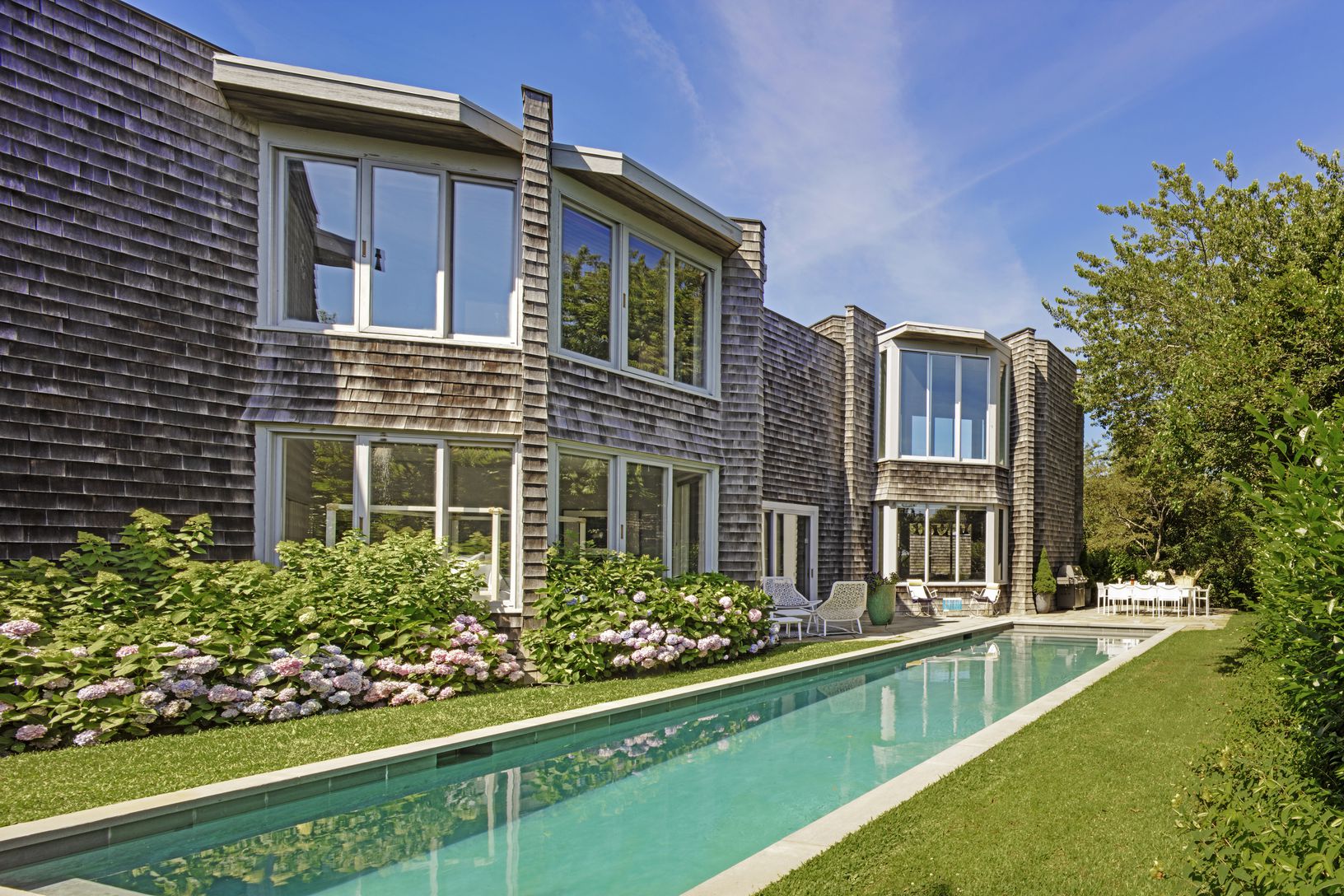
1961 - The O. Rudolph and Esther Johnson House, 39 Big Reed Path, Montauk NY. Designed with Gordon Chadwick. When the property was sold to owners who tore it down. Richard Johnson, son of the original owners, created a replica nearby and used Nelson's and Chadwick's plans plus salvage fron the original strucgture. Sold in 2008 to Rob Pruitt and Jonathan Horowitz. Sold in 2012 to Lauren Rottet.
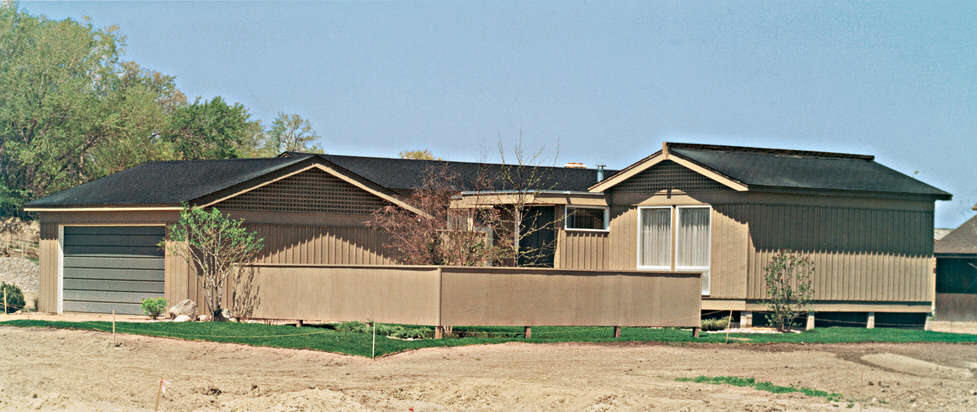
1969 - The Jonathan Housing Corporation Houses, Chaska, Minnesota. JHC was a conglomerate of a gas company, a chemical company, Standard Research Institute of Palo Alto, and the Jonathan Development Corporation. The settlement was supposed to comprise five villages, each with 7000 residents. Building began in 1967, and the city was to be completed in 1991. Jonathan was supposed to consist of several fixed house types, including a single-family house planned by Nelson and Chadwick that was to cost between $25,000 and $40,000. The house consisted of four modules, each with its own roof, which could then be arranged in different ways. At least five of the houses were built; an additional fifteen were planned. Status unknown.
Sources include: George Nelson Foundation, Hamptons 20th Century Modern, George Nelson: The Design of Modern Design.

